B.C. Fails to Meet Indigenous Consent Standard for Mining — 8 Recent Cases
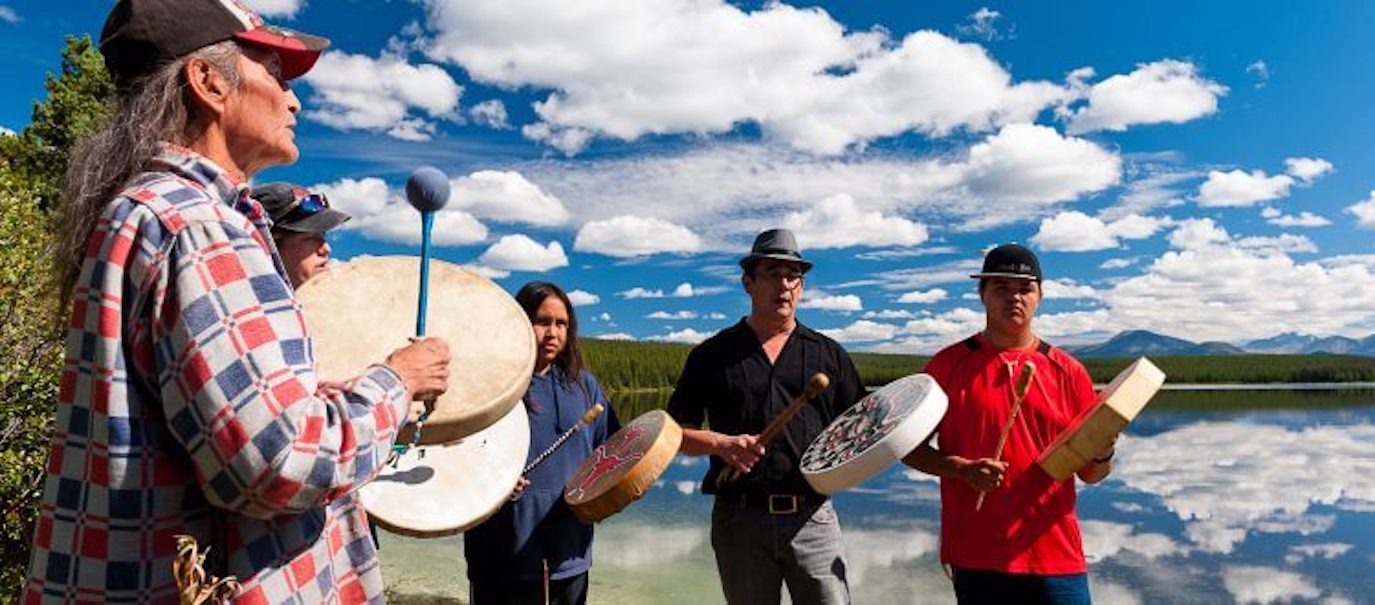
Vancouver/Ottawa – December 6th, 2021. In a new backgrounder report, MiningWatch Canada and the BC Mining Law Reform network conclude that British Columbia fails to meet the Indigenous consent standard for mining, even two years after the passing of the province’s Declaration on the Rights of Indigenous Peoples Act (DRIPA).
The report comes on the heels of a call made by investors managing some $1.1 trillion urging faster progress on Indigenous consent and mining reform in British Columbia. It also follows Gitxaała Nation’s recent legal challenge of the province’s Mineral Tenure Act.
The public interest organizations highlight that, “While B.C.’s mining legislation as a whole continues to allow mining companies to operate with little regard for Indigenous rights, the Mineral Tenure Act —which has its origins in the colonial gold rush days of the 1850s— is arguably the worst offender. In over 150 years, it has not been updated to reflect Indigenous rights.”
The organizations state: “This is especially concerning given that in 2020 alone, approximately 5,000 new mineral claims (1.9 million hectares) and approximately 1,400 new placer claims (63,000 hectares) were acquired without First Nations’ knowledge.”
The B.C. government made a great play of how DRIPA would position the province as a leader in the implementation of of the United Nations Declaration on the Rights of Indigenous Peoples (UNDRIP), including the right to Free, Prior, and Informed Consent (FPIC).
The report concludes: “This should mean FPIC is required for all stages of decision-making about mining projects that may affect an Indigenous Nation or its territories, from the granting of mineral rights to the decision on whether to proceed with a project to the conditions under which a project is designed, implemented, monitored, evaluated, and reclaimed.”
Indigenous cultures must not be forced to bear the brunt of global climate adaptation
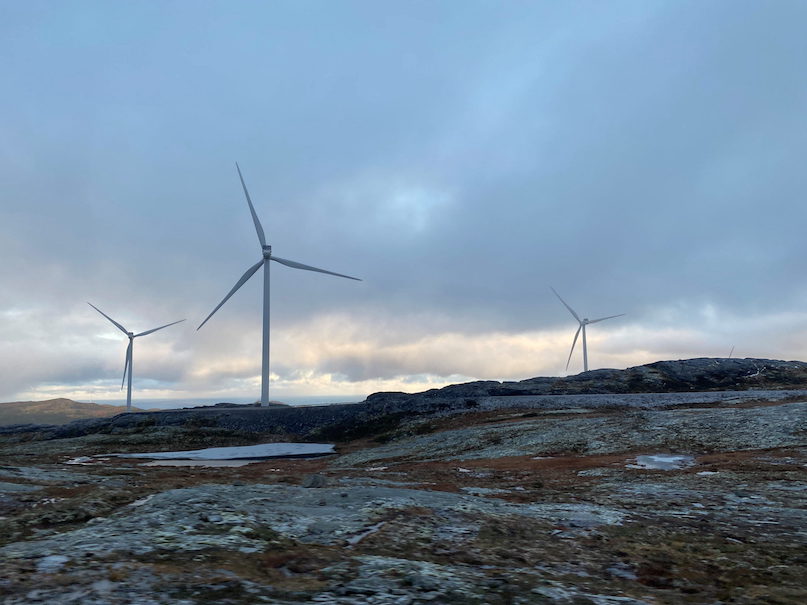
Forcing already endangered cultures to accept disruptive activities in the name of mitigating climate change amounts to a new form of colonialism.
As I write this, I am sitting by Várjjatvuotna; this is the name for Varangerfjord in my native Sámi language, once the only language spoken here. The sun is still below the horizon, but it casts a strong orange light in a strip between the mountains in the south and the dark clouds. It is January, and the temperature fluctuates between minus 20 degrees Celsius one moment and zero the next. When I was growing up in the 1970s, freezing cold was common at this time.
Recently, the Norwegian national broadcaster, NRK, presented a climate scenario for the year 2100. The scenario shows that my municipality, Unjárga – Nesseby (located at 70 degrees North), tops the list of places in Norway that can expect the most warming in the next 80 years. The area we live in, the only actual Arctic area in mainland Norway — is predicted to have the same climate in 2100 that Sogndal located in western Norway at 61 degrees North some 1,400 kilometers southeast, has today. How will that affect our livelihoods, our harvesting culture, our knowledge and language?
When I wander with my mother on the homelands of our people, she constantly talks about the land around us while we are walking, passing on the knowledge she heard from her mother and aunt. She talks about the weather conditions last spring and reasons where the berries are most likely to be found — and where there probably are no berries. In good cloudberry years, the trips with my family on the Varanger Peninsula can extend over several days.
One night we sat together around the fire. I asked my mother about the plans for the next day, in order to understand how she thinks about berry picking.
“Today we have spent the whole day picking cloudberries east of the campsite and mostly south of the lake. Where do you think we should be going tomorrow?” I asked. “Well,” she replied, and began to reason: “since there have been such strong easterly winds in early summer, there are probably not so many berries on the open bogs, but there are usually berries in the thicket on the northwest side of the lake, there the blossoms have probably been sheltered from the winds. There are often a lot of berries right there, they are big, too.” Then she interrupted herself, looked up at the clear sky and added: “Na, jos ieš ii čokkeš vuos”. It is Northern Sami, and can be translated as, “if he/she is not picking the berries him/herself” (Sámi language does not distinguish between genders in personal pronouns). She referred to the clear sky which already in August can warn of frost during the night, which would spoil the cloudberries.
This is not the first time I heard this kind of phrasing in the Sámi language. A reservation is always present. It is a recognition of the powers beyond one’s own power, powers you must have with you if you are to be lucky enough to get a good harvest. This is a worldview and knowledge that is passed down from generation to generation through customary use and belonging, faith and belief. We call it árbediehtu — Indigenous knowledge.

In his master’s thesis “Bivdit Luosa” – To Ask for Salmon, Sami scholar Aslak Holmberg writes about the young salmon fisherman Áslat. Áslat has learned from the elderly that guolli galgá bistit suddásis suddásii – the salmon you catch should last from the time the river freezes until it opens again. If you have salmon left, which you caught last summer, when a new fishing season begins, then fishing luck will not stand with you. Then you either have taken too much fish, or you have shared too little. To fish for salmon is in Northern Sami “bivdit luosa,” but the word “bivdit” can also mean to ask for salmon. A key lesson in Sámi culture is that you should not ask for more than you need.
Reindeer herder Elle Merete was given her own calf and her own reindeer mark when she was six years old. “It was the proudest moment in my life,” she says. ‘I got the reindeer earmark that mirrored the one of my aahka – grandmother. This has created a strong relationship and a special and strong community between aahka and me. When I marked my first calf in my own reindeer mark, I knew that this calf and the herd that would come from it over time would be my responsibility. I learned its colors, its qualities and of course reading and cutting my earmark. It was my responsibility that the calf became a good reindeer, that it had good food and was safe from danger in the reindeer grazing area, so that it would continue to provide our family with a livelihood.
It is not easy to put árbediehtu — Indigenous peoples’ knowledge — into words. It is a distinctive knowledge system, an understanding that is deep and complex. The Norwegian Biodiversity Act calls it “experience-based knowledge.” Some call it “silent knowledge” because it is not written down and can be perceived as pure intuition. It could also be called “silenced knowledge” because it has been marginalized by centuries of missionary work and “Norwegianization” which has led to this knowledge being seen as inferior. Loss of knowledge is a painful loss for a people.
Indigenous knowledge is a systematic way of thinking and knowing that is elaborated and applied to phenomena across biological, physical, cultural and linguistic systems. Indigenous knowledge is owned by the holders of that knowledge, often collectively, and is best expressed and transmitted through Indigenous languages. It is a body of knowledge generated through cultural practices, lived experiences, extensive and multi-generational observations, lessons and skills.
It has been developed and verified over millennia and is still developing as a living process, including knowledge acquired today and in the future, and it is passed on from generation to generation. In the last few years, the value of Indigenous knowledge has gained more official recognition. It is seen in the Convention on Biological Diversity, the Paris Agreement on Climate Change, and in the last two reports of the Intergovernmental Panel on Climate Change.
But how does this knowledge function when the places that generated it become different places?
According to NRK, the climate in Unjárga (or Nesseby) in 80 years is likely to be similar to today’s Sogndal. You can try to imagine it: Do cloudberries grow in Sogndal? Are there a lot of ticks in Sogndal? Do they carry diseases foreign to Unjárga? What will it be like to raise reindeer in a climate like Sognefjord’s? Today, reindeer husbandry is conducted in areas in the world where there is snow part of the year, because the reindeer and the people who follow the reindeer are adapted to manage in snow conditions parts of the year.
Sápmi has been the home of Sámi since time immemorial. It spans the northern parts of Norway, Sweden and Finland, and Russia’s Kola Peninsula, an area that is considered both Arctic and sub-Arctic. Here, the climate is changing two to three times faster than the global average. Globally, the discussion is about limiting climate change to 1.5 degrees Celsius, but in Arctic areas, that would be 3 to 4.5 degrees C. Commitments agreed to so far will not hit the 1.5-degree target, but rather 2 degrees or more, so in the Arctic a 4 to 6 degrees increase can be expected. It is not mainly the summers that are projected to get hotter; it is the winters. And they’re projected to get wetter too.
We already know a great deal about the impacts of climate change. We know that in Sámi areas we can expect a longer growing season, an earlier spring and later winter, which will lead to changes in the flora. The tree line will climb to higher altitudes,the forest will spread, and other species may take over from those we know in the area today. We will see overgrowth and more dense scrub, which also contributes to more of the previously white surface in winter becoming dark, which will feedback amplification of warming. The wetter climate can lead to better conditions for other plant species than those that are there today, and they will be able to displace the typical Arctic flora.
These factors can attract new types of insects and parasites, which can damage existing flora. Moth larvae have already caused immense damage to the dominant birch forests of northern Norway. An increase in parasites living on reindeer will affect animal welfare and human health. New and foreign insects can be bothersome to both animals and people, and in the worst case bring with them new diseases. We have also seen examples of early and dry springs that are out of step with insect pollination. Milder winters, where the temperature more often fluctuates around thawing and freezing, lead to icing of pastures and it becomes difficult for the reindeer to get to their food under snow and ice. When the sea temperature rises, today’s fish species will seek colder waters and new species will come to the coast and into the fjords. Warmer seas will also lead to ocean acidification. This will affect shellfish and fish fry and their growing conditions. The fishermen report changes in wind directions and stronger winds. Climate research does not say much about this but for fishermen it means more days on shore. Recently, heath and forest fires have also occurred in the southernmost areas of Sápmi. These current and future changes undermine the nature and resource foundation of Sámi culture. Species that sustain us in the Sámi food culture and in the Sámi handicraft (duodji) tradition disappear or deteriorate in quality.

Sámi livelihoods have good competence in dealing with changes — in nature-based industries, people deal with changing conditions in weather, wind, and surroundings all the time. If the pastures are locked by ice in the winter, then you have to lead the herd to alternative areas where they may access the pasture. In the worst case, they must be fed. If bogs, rivers, and lakes open up earlier in the spring, the reindeer herd must be led on alternative routes on their migration to the summer grazing. The female reindeer needs peace when it arrives at the place where it will give birth to its calf. During the height of summer the reindeer need their windy high-lying areas to get away from bothersome insects. This has been learned through generations.
It is the diversity of resources that is the foundation for life. Changing conditions and changing access to resources have taught us that one cannot be dependent on a single resource, such as cod, as in the case of the Sámi by the coast and in the fjords. When the cod fishery failed, the entire economic base did not collapse. Instead, it has been established that if something is wrong in the fjord, the fishing activity rests for a while and one moves on to harvest another resource on land or take a larger share of paid work. This is the essence of mixed economies. Flexibility is the key to survival in harsh climatic conditions.
It is life in the fjord that is the foundation for life in Sámi fjord areas — and it has been so for more than 10,000 years. A culture built around alternating use and flexibility and based on a diversity of resources will be less vulnerable to climate change than a culture that bases its livelihood on harvesting a single resource. If the culture stands strong, and one is able to control one’s own adaptation measures, and if other external stressors and pressures are kept at the minimum — then the people of that culture possess an ability to adapt to the prevailing conditions at any given time. Gal mii birget — we will cope — we often say. In the daily struggle to adapt to the changes in the natural environment, there may not be much time to mourn the changes you see.
The largest immediate threat to Sámi culture and to reindeer husbandry in particular might not be climate change per se, but the authorities’ mitigating measures intended to reduce carbon dioxide emissions — let’s say the secondary effects of climate change. You need to look for alternative energy sources for coal, oil and gas. Giant wind turbines are best located far away from urban areas and therefore granted a license mainly in existing reindeer-grazing areas. Wind turbines represent major nature destruction, with associated roads and power grids to transport energy to the market. Today’s turbines are enormous and the low sun in the north means that the turbines cast long moving shadows. A turbine does not only take the piece of land it is on.
Last month, Norway’s Supreme Court granted Sámi a victory when it revoked the licenses of two wind farms in grazing areas. Still, though herders now press for their removal, the Norwegian government hadn’t committed to tearing them down by the time this was published.
The mainstream society’s shift from fossil fuels to more environmentally friendly driving — with electric cars, electric ferries, electric buses, and electric bicycles stimulates the immense need for development of batteries. This requires minerals, including copper from mines found in Sámi areas. Not small mines, which were seen in the area a hundred years ago, but large mining facilities that require large areas. They require more roads, power lines, and permission to dispose of toxic tailings on the seafloor in the fjord. Mines also contribute to the fragmentation of intact land. The authorities knowingly and willingly sacrifice the productive fjord systems for jobs, economic growth and more climate-friendly driving – rather than simply driving less.
At the same time, corporations and governments are looking to the Arctic for new opportunities. New sailing routes are opening for increasingly regular shipping through the Arctic, and the Russian Federation is promoting destinations along the Northern Sea Route. More shipping traffic combined with the idea of a railway from the coastal town of Kirkenes in northeast Norway to the end of the present railway in Finland will open up a sea and land of opportunities to extract and transport resources directly out to the market (though this project is now on hold). These developments would lead to enormous encroachment on infrastructure-free areas, presently used for reindeer husbandry, on both the Finnish and Norwegian sides of the border.
Climate change is leading to a massive change in the way Sámi land is used. Sápmi continues to be a source of resources targeted by governments and outside capital.. The green shift is nothing more than a continued extraction of resources in Sámi areas, as has been the tradition since the earliest encounters between cultures. The difference is that resource utilization has been given a nice color, green; we call it “green colonization.” We were first colonized by people from outside our lands, then colonized by climate change itself, driven by people from outside our lands, and are now being colonized a third time by responses to climate change.
The Sámi people are standing up against this continued colonization. It will lead to Sami culture balancing on the verge of extinction in many areas. Reindeer husbandry and small-scale fisheries need more flexibility to adapt their activities, not less flexibility, which are the consequences of the green shift. At the same time, the business community still lives by the principle of seeking continuous economic growth, economies that are built on people’s ever-increasing consumption patterns. Are not far more resources taken out than you strictly need to survive, and also live? It is a paradox that the only ones who are met with demands for reduction from the authorities are reindeer husbandry and traditional sea salmon fishermen.
The Sámi are among those who contribute the least to what leads to climate change, yet we are among the first to be affected by the changes. Our industries are among the first to be affected by climate change, then we are affected again by society’s measures to mitigate climate change. The same goes for Indigenous peoples around the world. It is an obvious injustice that those who have the greatest consumption of fossil fuels, and thus also have the greatest need for climate-friendly infrastructure, impose on people and areas with the least responsibility for greenhouse gas emissions the greatest burdens of land loss and reduction in culture-bearing occupations. We must see a more equitable distribution of the burdens where society at large takes a greater share of the responsibility. We expect climate justice. We will take our share of responsibility and ensure good and healthy food, but the Sámi people can not bear the heaviest burden for society’s need for a green shift.
Inuvialuit Family Way of Living Law (Inuvialuit Qitunrariit Inuuniarnikkun Maligaksat) passes after community consultation
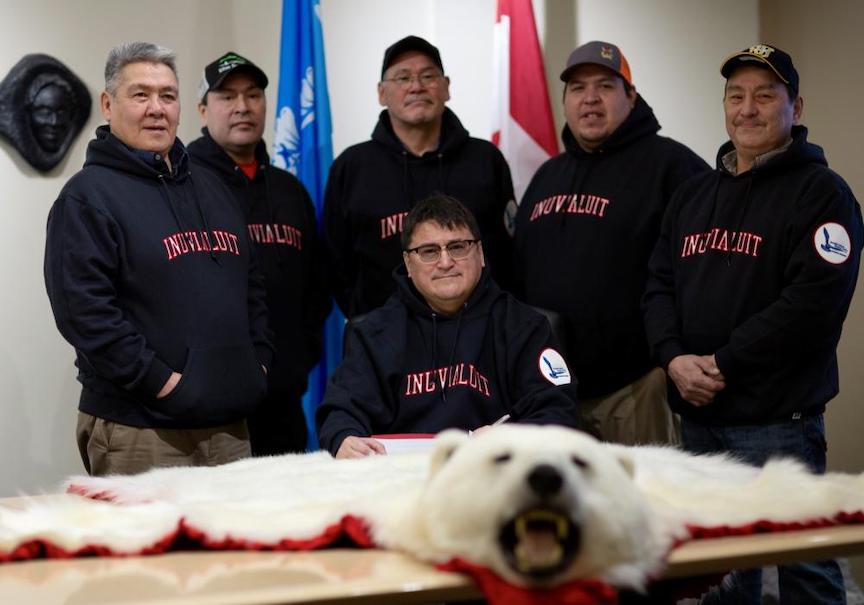
Over the last year, we’ve been visiting communities to talk about how Inuvialuit want to care for their families and culture.
Today, as a result of that consultation, the IRC Board passed the first Inuvialuit Law, which will make sure that Inuvialuit children and youth in care, as well as their families, are supported wherever they live, to the benefit of our communities and Inuvialuit culture.
The law, which is called Inuvialuit Qitunrariit Inuuniarnikkun Maligaksat, establishes our inherent jurisdiction over child and family services and has four guiding principles, based on what we heard from Inuvialuit Settlement Region communities over the course of the past year:
- To ensure cultural continuity for each Inuvialuit child and youth, which is essential to wellbeing, and which includes serving each child and youth in their home community to the greatest extent possible;
- To enhance the supports available to enable Inuvialuit families to thrive, reducing the need for intervention;
- To improve information sharing for fully informed service provision, advocacy, and decision-making; and
- To grow the exercise of Inuvialuit jurisdiction in child and family services at our own pace, in our own way.
With this new law, Inuvialuit becomes the first Inuit region to enact its own child wellbeing legislation, an important step in self-determination and a proud achievement for all Inuvialuit.
While all existing child and youth protection laws remain in force for now, as this new legislation is implemented, the new law requires all federal, territorial and provincial governments to meet certain basic standards when providing child and family services to Inuvialuit children, youth, and their families.
Inuvialuit Qitunrariit Inuuniarnikkun Maligaksat, which was named by Elders to represent all dialects and means “Inuvialuit Family Way of Living Law,”is designed to support a gradual transition over several years to full Inuvialuit control of the care of Inuvialuit children and youth. Over time, it will see the creation of future facilities, community staffing and a new dedicated organization to be called Maligaksat, which will advocate for Inuvialuit children and youth wherever they live and serve to fill the gaps in existing services.
“The wellbeing of our culture and our children starts with the family,” said IRC CEO and Chair Duane Ningaqsiq Smith. “This law is an important part of the IRC’s continuing work to lift up the Inuvialuit and be a model of proud and impactful self-government.”
The laws and regulations can be found here and more information about the law and what it means to you is attached below.
Laws and Regulations (Link to Inuvialuit Registry on IRC Website)
- Inuvialuit Qitunrariit Inuuniarnikkun Maligaksat
- General Regulation
- Family Support Regulation
- Custom Adoption Regulation
- Enforcement and Administrative Monetary Penalties Regulation
Board presentation Nov 2021 Child Wellbeing – Inuvialuit Qitunrariit Inuuniarnikkun Maligaksat
Philanthropy Must Support Indigenous-Led Climate Solutions
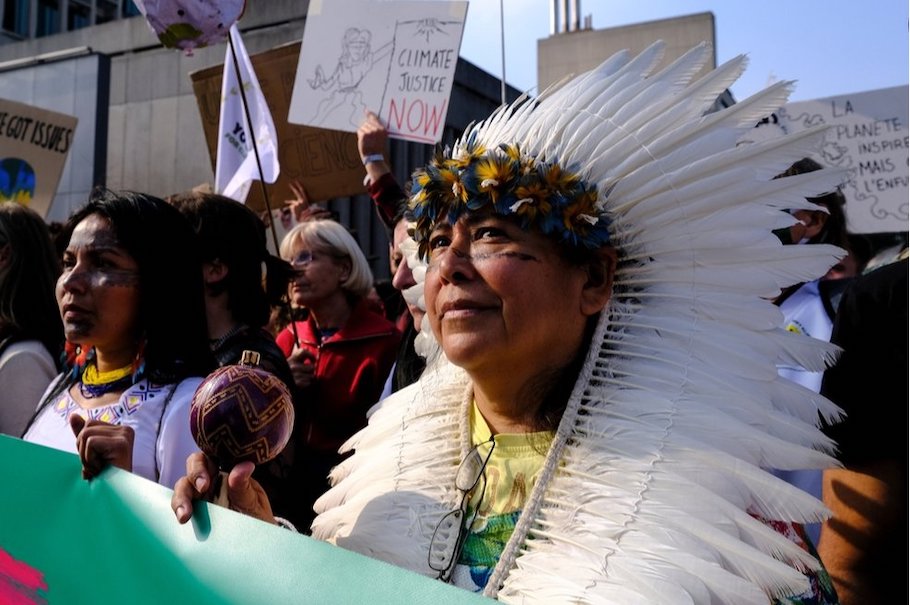
As world leaders gather in Scotland this week for the latest international meeting focused on addressing the catastrophic effects of climate change, the stakes are high for all people on the planet—but Indigenous Peoples most of all. From the Saami in Scandinavia and the Indigenous Peoples of the Amazon to Coastal First Nations in Canada, warming temperatures and increasingly unpredictable conditions threaten the ways of living, knowing and relationship with lands and natural systems that have supported them and their ancestors for millennia.
Coming to the right climate solutions will mean listening to the experiences and following the solutions of Indigenous communities that are already suffering some of the worst effects of climate change. It also means respecting their human rights, sovereignty, leadership and wisdom about how best to care for the planet we share.
Indigenous Peoples are 5% of the world’s population, yet research shows they hold tenure over 25% of the Earth’s land surface and play a vital role in defending and protecting 80% of the world’s biodiversity. These communities are dealing with the consequences of climate change every day, and are the ones uniquely positioned to test and advance real climate solutions. Indigenous Peoples are already working with scientists and governments to do just that.
As donors who support social movements led by Indigenous Peoples, we believe it is past time for philanthropy and governments to commit real resources to Indigenous-led organizations and communities working to protect the Earth. Across philanthropy, some funders are showing an increased interest in supporting Indigenous-led groups. But the overwhelming majority of foundation grants, especially on climate and environmental issues, continue to go to white-led nonprofits and conservation groups. Even if larger, mainstream environmental groups are working to incorporate Indigenous voices into their work, the prevailing funding patterns in philanthropy represent a continuation of the colonized, industrialized thinking that has brought us to the precipice of climate disaster. As a result, Indigenous Peoples are seen as a means to an end to carry out solutions ordained by white folks.
When the Indigenous-led Global Alliance of Territorial Communities issued a strong call for action on climate change in the lead-up to the 2015 global climate meeting, it was a breakthrough moment. Indigenous Peoples were demanding a seat at the negotiating table, and world leaders began to take notice. At COP26 in Glasgow this week, Indigenous communities will continue to demonstrate their self-determination and leadership.
This is not just a matter of choosing a good approach. Under the U.N. Declaration on the Rights of Indigenous Peoples (UNDRIP), adopted in 2007, Indigenous Peoples have a right to self-determination, which includes “free, prior and informed consent” when it comes to projects and policies that can affect their territories, their resources, their well-being and their lives. It is a set of rights that should inform global talks on climate as world leaders and civil society engage in decision-making with profound implications for Indigenous Peoples around the world.
Agreeing that Indigenous Peoples have the right to sovereignty and self-determination is not enough. Philanthropy and governments must fund Indigenous-led groups and funds so they are able to fully exercise their political and inherent rights. As longtime funders of Indigenous-led organizations and projects, we know they have the capacity and knowledge to implement real and lasting climate solutions. Climate justice simply is not possible without funding and respecting Indigenous sovereignty and leadership.
It is past time to cede power and resources to Indigenous-led efforts so they can mobilize their communities and apply their knowledge to the work of mitigating the effects of climate change. Only in right relationship with Indigenous Peoples can we work to address the most urgent global issue of our time.
‘Like slave and master’: DRC miners toil for 30p an hour to fuel electric cars

Congolese workers describe a system of abuse, precarious employment and paltry wages – all to power the green vehicle revolution
The names Tesla, Renault and Volvo mean nothing to Pierre*. He has never heard of an electric car. But as he heads out to work each morning in the bustling, dusty town of Fungurume, in the Democratic Republic of Congo’s southern mining belt, he is the first link in a supply chain that is fuelling the electric vehicle revolution and its promise of a decarbonised future.
Pierre is mining for cobalt, one of the world’s most sought-after minerals, and a key ingredient in the batteries that power most electric vehicles (EVs).
He says his basic wage is the equivalent of £2.60 ($3.50) a day, but if he works through lunch and puts in hours of overtime, he can make up to about £3.70. Not that lunch is worth waiting for: he claims he is given just two small bread rolls and a carton of juice.
“The salary is very, very small. It gives me a headache … The mine makes so much and we make so little,” he says.
If he takes a day off, he says money is deducted from his wages. If he is sick and misses more than two days in a month, more money is cut. “You can’t even argue. If you do, you’ll be fired,” he says, squatting on the dirt floor of the bare brick shack he rents.
“The relationship between us and the [mine] is like a slave and a master,” says Pierre.
Stories of the harsh and dangerous working conditions endured by miners in the DRC’s informal, or artisanal, cobalt mines – of child labour and miners being buried alive as tunnels cave in – have provoked an international outcry in recent years, forcing the western technology and automotive brands that rely on the mineral to look for ways to source “clean” cobalt, free from human rights abuses.
Some companies in the cobalt supply chain have promised to stop sourcing from artisanal mines and instead get the mineral from large-scale industrial mines, which are seen as a safer option both for workers and corporate reputations.

Pierre is not working at an artisanal mine, however. He is employed, via a subcontractor, at Tenke Fungurume mine (TFM), one of the country’s biggest industrial mines, which is 80% owned by the Chinese company China Molybdenum(CMOC).
An investigation by the Guardian has found that some workers, often employed through subcontractors, allege they are victims of severe exploitation, including wages as low as 30p an hour, precarious employment with no contracts, and paltry food rations. In a number of mines run by Chinese companies, workers made allegations of discrimination and racism reminiscent of the colonial era.
The Guardian has tracked the cobalt supply chain from TFM and other industrial mines through a number of refiners and battery makers to some of the world’s leading electric car manufacturers, including Tesla, VW, Volvo, Renault and Mercedes-Benz .
It’s a shocking situation, but I can’t leave the job because there is no other choice. Where can I get another job?
While the cobalt supply chain is highly complex, all these car manufacturers identified by the Guardian can be linked to one or more of the industrial mines named by the Guardian through a small number of key refineries and battery makers.
Many EV brands have made public commitments to “responsible sourcing” of minerals, and some – notably Tesla – are using innovative ways to achieve this. Nevertheless, the Guardian’s findings suggest how far the sector still has to go to ensure the shift to clean energy is not tainted by claims of workers’ rights abuses.
As delegates meet at Cop26, the UN climate change conference in Glasgow, the transition from petrol to EVs is being talked about as a key step in reducing carbon emissions. Global sales of passenger EVs – excluding hybrids – are expected to soar from 3.3m in 2021 to 66m in 2040. In the UK, that growth will be driven by the government’s ban on the sale of petrol and diesel cars from 2030.
Last year, about 70% of the world’s cobalt came from the DRC and the vast majority of that – 93,000 out of 100,000 tonnes, according to Benchmark Mineral Intelligence (BMI) – came from large-scale industrial mines.
Although some battery and car manufacturers have reduced the amount of cobalt in their batteries, BMI says the volume of sales of cobalt into the sector will rise four or fivefold over the coming decade. The World Bank estimates that demand for cobalt production will increase 585% by 2050.
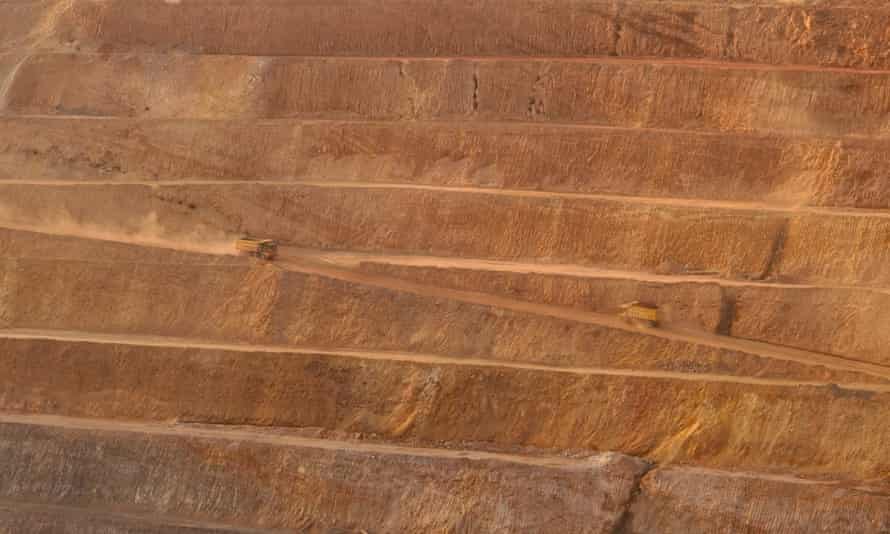
That should be good news for people in southern DRC, where the majority of the cobalt mines are located, but a report launched today by UK-based corporate watchdog Raid and Congolese lawyers from the Centre d’Aide Juridico-Judiciaire, says many multinational mining companies – and the subcontractors they hire – create poorly paid jobs that keep workers in poverty.
“Cobalt is an essential mineral for the green transition, but we must not turn away from the abusive labour conditions that taint the lithium-ion batteries needed for millions of electric vehicles,” said Raid director Anneke Van Woudenberg
Kolwezi is the DRC’s cobalt capital, a city so defined by mining that some communities sit on the rim of the giant craters that have been excavated in search of copper and cobalt. It is mining on a massive scale, highly mechanised and dependent on cutting-edge technology but powered by thousands of workers – more than 10,000 at TFM – who, like Pierre, are employed as mineral processors, drivers, mechanics, welders, security guards and general workers.
In the last 15 years, Chinese companies have begun to enter the mining business, buying out North American and European companies so that they now control the majority of the cobalt and copper mines in southern DRC. And with this change, Congolese workers say, has come abuse, discrimination and racism. They say they are insulted, in some cases beaten, and claim they are paid less than Chinese workers who do the same job. They allege that Chinese supervisors disregard their experience and put production before safety.
“We’re being treated in a very bad way by the Chinese. I’m a victim of assault myself. I was slapped across the face four times,” says Mutamba, another worker at TFM.
One Congolese worker at TFM described sitting through a two-hour meeting in Chinese, only to be given a two-minute translation at the end.
“We feel humiliated and embarrassed,” he says. “The way they are treating our people, you can’t believe. We are just expecting them to have respect for human life, instead of using people like slaves.”
Over the course of the investigation, workers interviewed by the Guardian said they deeply resented the way they were treated, but felt powerless to protest. “It’s a shocking situation, but I can’t leave the job because there is no other choice,” says one. “Where can I get another job?”
A spokesperson for CMOC, which majority owns TFM, said the company adheres to a number of international labour conventions and local labour laws. Since it acquired the mine in 2016, CMOC said it has contributed an average of £296m a year to the country’s revenue. “We are devoted to providing a safe, healthy and decent work environment to all employees and attach great importance to protecting the rights of employees,” the spokesperson said.
Mining for cobalt and copper is a vital source of income for DRC’s government and creates tens of thousands of jobs – with good wages for many – in a region with few other employment opportunities. But in some mines the majority of workers – almost 70% at TFM, for example – are hired through sub-contractors.
The use of subcontractors can leave workers in an extremely precarious position: often hired on short-term contracts, or no contract at all, with limited benefits, low pay and the threat of termination always hanging over them.

Josué Kashal, a lawyer for Centre d’Aide Juridico-Judiciaire, a local organisation that represents miners, says the use of subcontractors can lead to the big mines being able to avoid accountability.
In his small office in Kolwezi, Kashal shows the Guardian a list of what he claims are more than 50 subcontractors that have been used by the Kamoto Copper Company (KCC) mine, which is owned by the Swiss commodities and mining giant Glencore.
“Glencore is using many subcontracted workers, so employees depend on the subcontractor, not Glencore. This way they don’t have responsibility and can end a contract at any time,” says Kashal.
While some workers said they hoped to get hired directly by KCC, saying it offered better wages than other mines, 44% of KCC’s workers are employed through sub-contractors. The price is paid by men like Luc. “I started on £80 a month while working as a security guard at KCC. Then KCC terminated the contract with the subcontractor and I suddenly lost my job, along with 600 other guards,” he says.
Luc was recently rehired by another security firm at the mine, but says he is still earning less than £140 a month. “The main companies are treating the subcontractors well, but the subcontractors don’t treat workers well. The mining companies are benefitting a lot, not the local people,” he says.
Glencore said KCC only uses sub-contractors for specialist work or temporary contracts and monitors compliance with the terms of its contracts. “In 2021, KCC became aware that employees of a global contractor company, whose contract ceased due to the reduction of project activities during the Covid-19 pandemic, did not receive their wages to the end of their employment term. In this instance, KCC engaged with the contractor … and the employees received the correct payment,” a spokesperson said.
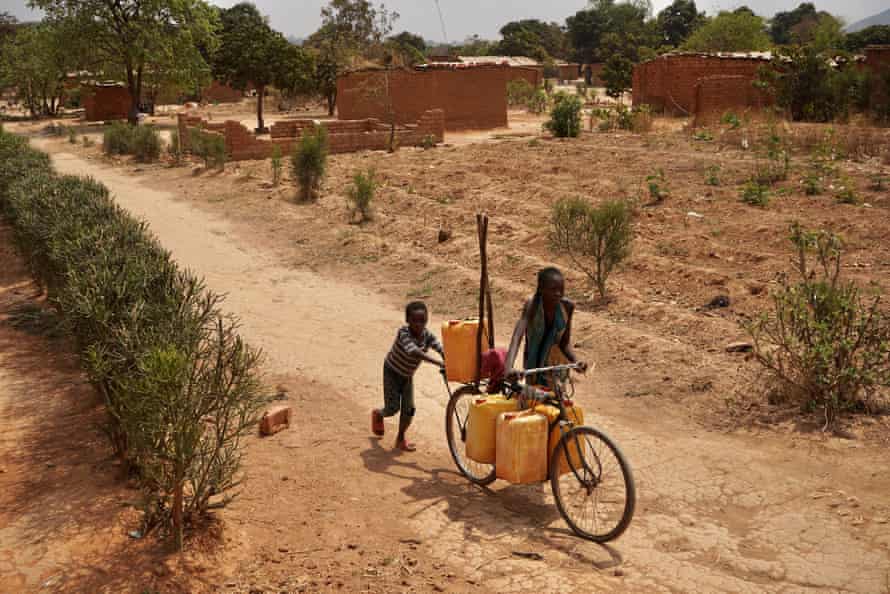
In June 2020, Tesla signed a long-term deal to source cobalt from Glencore for its new “giga-factories” in Berlin and Shanghai. Tesla did not respond to multiple requests for comment, but in its latest impact report, the company says it procures cobalt only from producers in the DRC that meet its responsible sourcing standards. To avoid its material being “contaminated” by cobalt from other sources as it passes along the supply chain, it is “stored in clearly marked, segregated areas of the plant and is toll processed on lines dedicated for Tesla”, the report says. Two mineral experts told the Guardian this process is likely to be rigorous.
There is no drinking water, no electricity, no school, no health care. Our community is right next to CDM, but they don’t do anything for us.
Covid has compounded the already poor labour conditions endured by many workers. The community of Kawama stretches along one side of the main road south of Lubumbashi. On the other side stands the Congo Dongfang International Mining (CDM) mine and refinery.
When the pandemic started, many CDM workers were confined to the mine for three months until the Congolese government compelled the company to release them. Koffi, who worked at the mine as a security guard, told the Guardian he shared a hall with 80 others, with two workers sharing a mattress laid on a wooden board and propped up on bricks. “I felt like a prisoner. I didn’t have any freedom,” he says.
In interviews with the Guardian, some CDM workers say they are employed for as little as £88 a month. “Payslips” seen by the Guardian were written only in Chinese on a pencil-thin strip of paper.
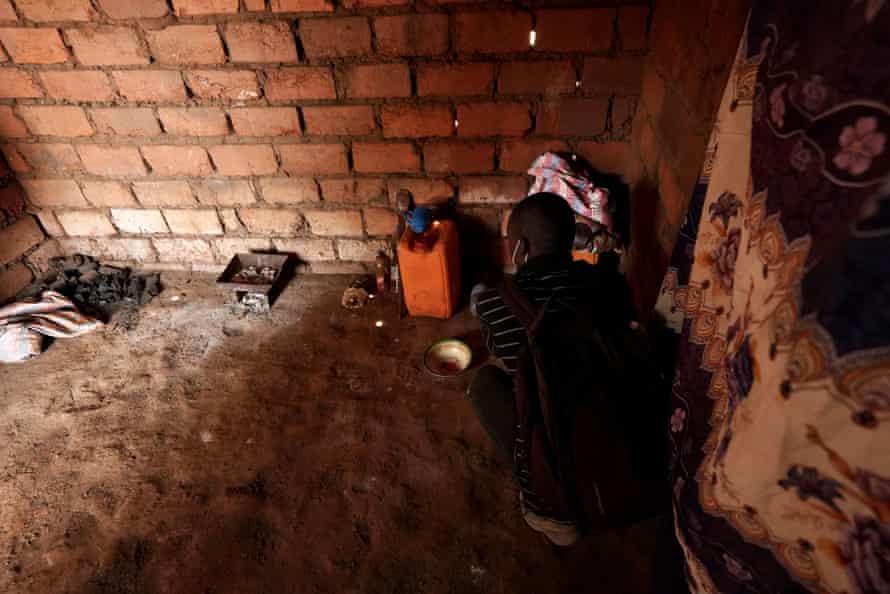
CDM is wholly owned by Huayou Cobalt, a Chinese conglomerate with interests in every step of the cobalt supply chain, from mining to cathode production. Renault and Daimler, the parent company of Mercedes-Benz, name CDM among their suppliers.
Huayou Cobalt said CDM “adopted a policy of healthy and safe operation” at the outbreak of the coronavirus pandemic until the government put forward its own pandemic prevention policies. It said all workers were paid in line with local labour laws. CDM has made significant contributions to the local community, Huayou Cobalt said, including organising agricultural education, building and renovating schools, setting up medical clinics and providing water and electricity to local villages.
But there appears to be little sign of that in Kawama, a collection of red brick shacks with corrugated iron roofs held down by rocks. A woman heaves a bicycle laden with yellow water drums along a dry dirt track, a young boy helping to push from behind.
“There is no drinking water, no electricity, no school, no healthcare,” claims Koffi. “Our community is right next to CDM, but they don’t do anything for us.”
Renault, Volvo VW and Daimler, the parent company of Mercedes-Benz, responded saying they recognised the importance of responsible mineral sourcing, took the allegations seriously and would discuss the findings with their suppliers.
*All names have been changed
COUNTERING THE ‘NUCLEAR FOR CLIMATE’ NARRATIVE: TESTIMONIES FROM THE FRONTLINES OF THE NUCLEAR FRONTIER
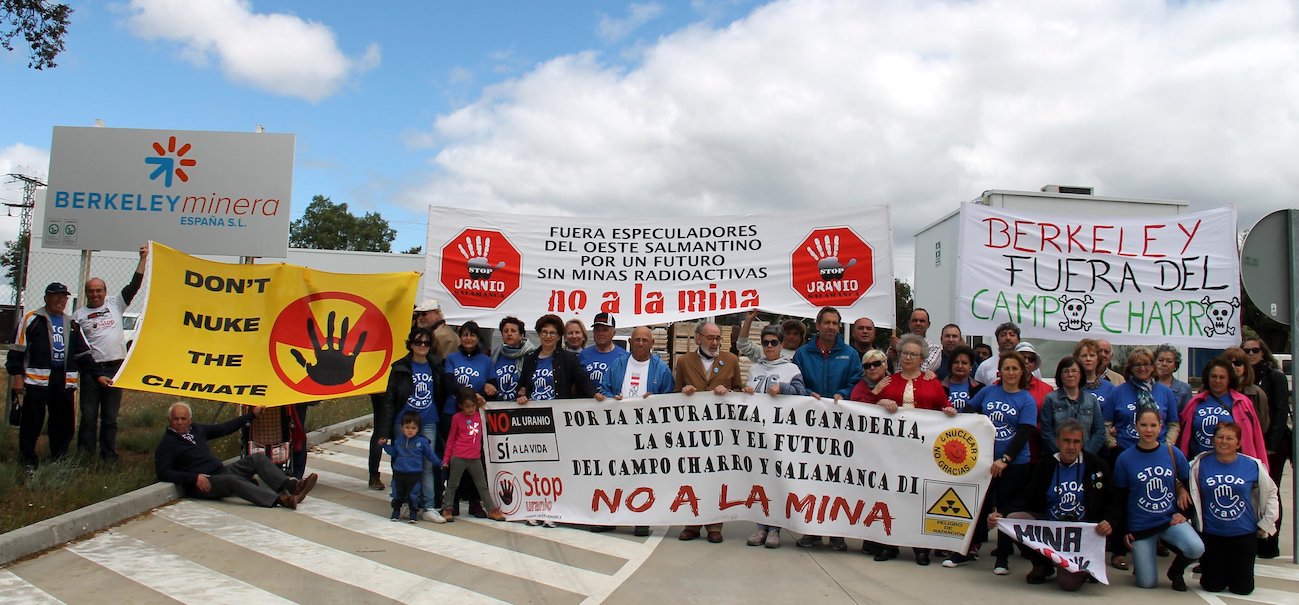
‘NUCLEAR FOR CLIMATE’ AS AN EXTRACTIVE STRATEGY
Last year’s COP meeting has just begun. Postponed due to the pandemic – Glasgow, Scotland, was to host the summit in November 2020 – representatives from around the world are once again turning their attention to the problem of climate change at the UN conference. COP26 in Glasgow will get a lot of attention, but probably not enough measured against the undisputed and enormous challenges of anthropogenic climate change. The year 2021 has – yet again – made it clear in many parts of the world, and in some cases cruelly[1], that urgent action is needed. The latest IPCC report once again provides the scientific insights, but the political and economic consequences remain controversial and the result is all too often inaction. The changes necessary to avert complete breakdown will have to be more profound than merely changing electricity suppliers. At stake is a profound change in the way we produce, consume and live. In short, the dominant paradigm in the fight against climate change lacks a post-growth strategy. But some propagate a supposedly simple carbon-free way out: nuclear power. For years now, a narrative has been gaining renewed support in certain corners, according to which the production of electricity through nuclear fission seems imperative for climate change mitigation. Against the backdrop of COP26, Beyond Extraction draws a line from nuclear lobbying in the name of climate protection to the centre of our collective’s work so far, the critical examination of the consequences and devastation of mining, exploration, and the speculation in raw materials.
In this brief article, we look at the link between the nuclear lobby, the mining industry and resource speculation and bring to the forefront the people and places who would be affected by uranium mining. While the nuclear industry is trying to present itself internationally as key to the energy solution of the climate crisis, the mining industry is waiting in the wings to offer new and old uranium mining projects as investment opportunities. But what about the people and places that would be affected by uranium mining? In order to answer this question, we need to focus on an area mostly ignored in the general debate: the initial stages in the nuclear fuel chain[2].
The various other reasons[3] for which nuclear power cannot be a valid answer to the climate crisis are unaffected by this.
Beyond Extraction therefore sought to amplify the voices of those campaigning against old and projected uranium mines and the devastating legacy of nuclear fuel production in Canada, Greenland, Namibia, Spain, and Tanzania. They are pushing for a carbon free, truly renewable future of energy production and against a false promise of nuclear power.
NUCLEAR ENTHUSIASM – NUCLEAR RENAISSANCE – NUCLEAR FOR CLIMATE
It is not the first time that nuclear power has been seen as a technological fix to major societal problems, nor the first time that climate change has been claimed as a problem to be solved by nuclear reactors. But all nuclear enthusiasm plays under the conditions and omens of its time. In the 1950s quasi-utopian future conditions were associated with the splitting of the uranium atom. The nuclear enthusiasm of the 1970s took place especially under the pretext of the oil crises and the subsequent debates on energy security. In both phases of great expectations in nuclear power, large mines were developed and uranium was explored across the globe. But the great expectations did not materialize as projected. This was no different in the overblown discourse of the ‘nuclear renaissance’ of the 2000s with its hyper ambitious growth scenarios. And yet, high future expectations in growing nuclear electricity production led to uranium exploration, mine expansions and new development activities. And this is precisely what we must be aware of today when governments, lobbying organizations and even some misguided environmentalists are talking about nuclear power being a potential force against the climate crisis. In fact, investing in uranium stocks is already being touted as a way to profit from climate policy[4].
GREENING NUCLEAR POWER’S FINANCES!?
For some years now, the COP summits have repeatedly become an arena of the nuclear lobby. Attempts to present itself as a potential solution to the climate crisis at the Glasgow summit already led to debates in the run-up to the summit[5].
Self-proclaimed pro-nuclear activists say they want to take the COP meeting by storm[6] and major nuclear companies and its lobby are represented in Glasgow and beat their radiant advertising drum. ‘Nuclear for Climate’ is their motto and it is echoed in different parts of the world. In the EU, for example, there is currently a serious debate under the slogan of a Green Deal about whether the design of a European sustainability label in the financial sector (the so-called EU taxonomy) should, in the future, treat the financial support for nuclear power as support for sustainability and climate neutrality. This would label subsidies for nuclear power as a supposedly sustainable technology[7]. Matter of fact, an assessment published in April 2021 by the EU’s Joint Research Centre (JRC)[8], concluded that nuclear energy is not harmful to humans or the environment. This assessment is, of course, a travesty for all those who have lost land, health and livelihoods to uranium mining or would be threatened by it to say nothing of those harmed by the various catastrophic meltdowns, the most recent being in Fukushima, Japan in 2011. But Europe is not alone in this: Canada provides significant support for the development of so called Small Modular Reactors (SMRs)[9]. In the USA, too, plans are being discussed to provide financial subsidies and relief for nuclear energy, which would happen at the expense of the expansion of renewable energies[10]. One of the arguments is climate mitigation.
RESOURCE SPECULATION AND THE REVIVAL OF A DINOSAUR AT PDAC AND ELSEWHERE
Beyond Extraction’s central activities so far have focused on the critical monitoring of the annual Toronto-based Prospectors and Developers Association of Canada (PDAC) convention. PDAC is amongst the most important global investment conferences for the mining sector. During the 2000s, the nuclear renaissance discourse translated into talk about market fundamentals that would indicate that prices for uranium would definitely have to rise due to a definitely rising number of operating nuclear reactors. So naturally the idea of a materializing nuclear renaissance was greeted with enthusiasm amongst the speculative prospectors and developers.
Measured by the aims of its proponents, the nuclear renaissance remained rather limited, yet it resulted in rampant speculation with uranium inventories, stocks, futures, prospective geology and flushed investment money into uranium exploration ventures. PDAC is not only emblematic of this form of speculation but is also one of the most important sites and gatherings for those who seek to turn geological riches into private profits. In its coverage of the PDAC convention in 2007, while uranium spot prices were approaching their peak during the so called nuclear renaissance, the Northern Miner (2007) reported that “this was uranium’s year at the PDAC, with junior explorers touting hundreds of new uranium exploration and development projects located around the world”. The mining industry journal emphasized further, “there’s actually a lot of [uranium] lying around the planet; the tricky part is jumping through the regulatory hurdles, mining it and selling it at a profit”[11].
The nuclear renaissance talk ended with the aftermath of the reactor core meltdown in Fukushima, Japan in March 2011. Containing the damage to the industry’s image was the new motto and seemingly a job as hard as containing radiation in and around Fukushima Daiichi – which, even a decade after the accident, poses major challenges. Momentum in the nuclear industry today is undoubtedly linked to a collective amnesia about the catastrophic meltdown at Fukushima, coupled with the return of the renaissance discourse in the face of climate change.
Central to this is the investment in research and development of SMRs. For years now, PDAC has offered a platform for the nuclear industry and its most committed partners, such as the Government of Canada, to offer a vision of the nuclear industry that is more subtle and, crucially, more mobile. In Canada’s Roadmap to SMR’s[12] and its Minerals and Metals Plan, small and modular reactors are positioned as a powerful way for the mining industry to reduce its carbon emissions and the overall footprint of a project. Similarly, French president, Emanuel Macron, has recently spoken in favour of continuing down the nuclear path, with reference to the presumed developments of SMRs as a way of combatting climate change. Yet, as is usual, the promotion of this re-imagined dinosaur fails to account for the risks associated with both increasing demand for uranium and the danger of making nuclear reactors mobile. Take, for example, the ‘Akademik Lomonosov,” the only floating, and therefore mobile, nuclear power plant today. Built by Rosatom, the Russian state-owned Nuclear Corporation it is stationed at the arctic port town of Pevek. Rosatom claims that the power station was good to avoid C02 emissions, yet as an enabler of enhanced oil, gas, and mineral exploration and potential extraction in the Arctic region it is effectively a means to dig out more hydrocarbons.
TESTIMONIES FROM NUCLEAR POWER’S EXTRACTIVE FRONTIER AND THOSE ACTIVELY RESISTING ITS EXPANSION
Nuclear power is effectively on the decline[13]. Industry’s repeated rescue attempts, however, are misleading, they waste time and resources, and they slowly start to inflate a speculative bubble around uranium resources. It is worrying that the narrative of a possible, albeit nuclear, “business as usual” could gain momentum in the face of increasingly severe climate change impacts. This is perhaps especially so for the communities affected by uranium mining or exploration whereby the threats of extraction are dangerously high. This list of testimonies is limited and would have to be expanded in order to do justice to the global spread of experiences with uranium mining and exploration. Yet here campaigners from across the globe offer their rich insights about the climate crisis and its mitigation.
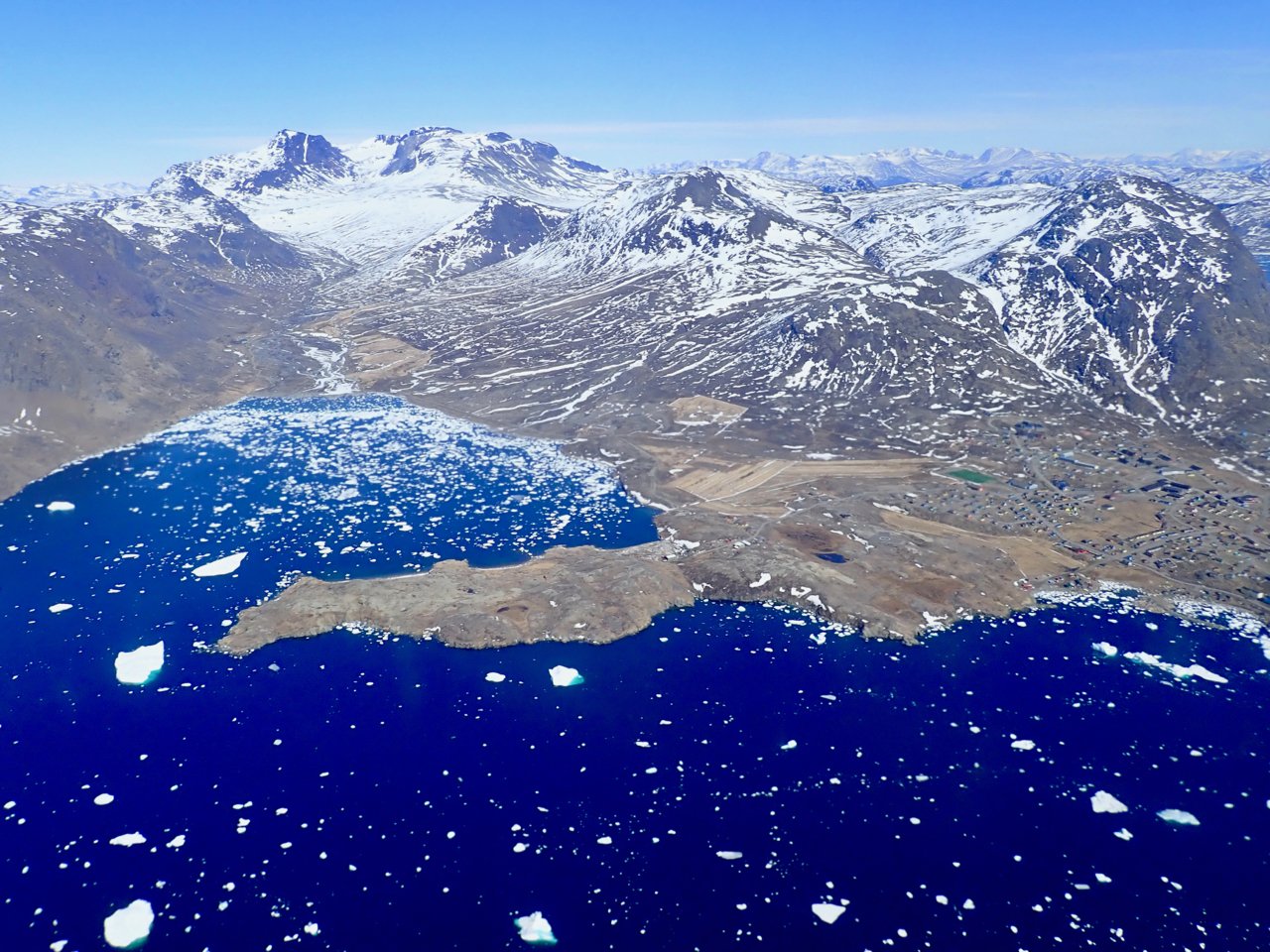
GREENLAND
My name is Niels Henrik Hooge and I am from NOAH Friends of the Earth Denmark. NOAH opposes uranium mining as well as any type of large-scale mining in the Arctic region. Currently, there are about 90 active large-scale exploration and exploitation licenses in Greenland, covering thousands of square kilometres, and almost all related to surface mining projects. Most of them are located in Southern Greenland, which has the country’s richest biodiversity and all of Greenland’s farm land.
The Arctic environment is particularly vulnerable to pollution, because it recovers very slowly. The long-term economic costs of pollution in Greenland could be so high that they by far exceed the short-term economic benefits of large-scale mining and not least uranium mining.
Many other countries have experienced negative impacts, including widespread pollution of water, land and air, and the destruction of pristine nature and precious habitats.
For these reasons, NOAH calls on the Greenlandic and Danish governments, the European Union, and everybody else who takes an interest, to help establish an Arctic sanctuary. The inspiration could be the Antarctic Treaty, as supplemented by the Madrid Protocol signed in 1991, but respecting the fundamental difference represented by the populated nature of Greenland and the Arctic and the rights and needs of the peoples and nations of the Arctic region.

NAMIBIA
My name is Bertchen Kohrs, I am the chairperson of Earthlife Namibia, a voluntary non-profit, non-governmental organisation, concerned about environmental and social justice and sustainable development. Earthlife is located in Windhoek, the capital of Namibia.
The nuclear cycle starts right here in Namibia where uranium is extracted by several foreign companies. Presently two open-pit uranium mines are fully operating, one mine is put under care and maintenance, and one mine will reopen soon.
In the face of a major number of uranium exploration licenses granted in 2006 /2007 by the Namibian government, Earthlife Namibia saw the need to research on the issue of uranium mining, raise awareness in the public and with politicians about the dangers and risks connected to uranium mining and the nuclear industry in general and initiate public debates on the issue.
We conducted studies with the assistance of radiological scientists on the impact on the environment and on the health of mine workers. The studies clearly show significant environmental damage; contamination with uranium and other toxic substances were detected in soil and groundwater.
The health study clearly indicates that many workers develop severe disease symptoms from exposure to radiation and dust that are not recognized by the mines as occupationally related diseases. The workers pay a high price for being employed.
Uranium mining companies are inaccessible, non-transparent and spread humiliating lies to silence the population. Namibia is a desert country with an abundance of sun and wind, thus has the top conditions for renewable energy. The past has proven many times that nuclear energy is dangerous, dirty, not sustainable, too expensive, extremely risky, and generates non-manageable waste. Proliferation of nuclear weapons and munitions is a permanent threat to the planet. Nuclear energy is not at all climate friendly, on the contrary, nuclear industry hinders the development of renewable energy.
The only sensible solution is to leave the uranium untouched in the ground. This is what Earthlife Namibia fights for.
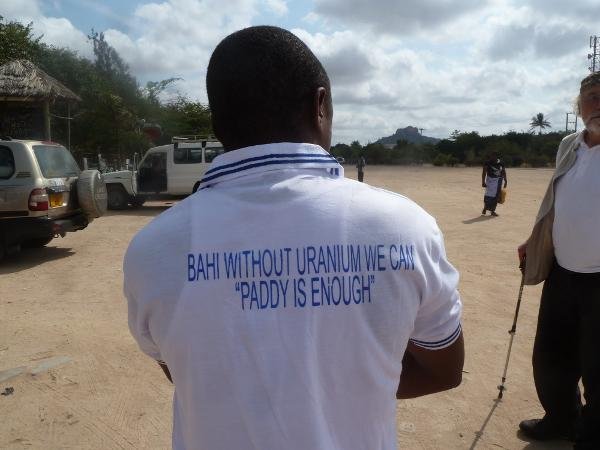
TANZANIA
My Name is Anthony Bonifasi Lyamunda, I live in Dodoma, the Capital City of Tanzania and I am the founder of CESOPE (Civil Education is the Solution to Poverty and Environmental Management). Our organization has long supported the people of Bahi, an administrative district very close to Dodoma and the place where I grew up. But since the mid-2000s, we have been confronted with a threat that was previously unknown to us. In the places where the people of Bahi and neighbouring districts live and work, farm and fish, uranium has been explored and mining has been considered. In 2009 CESOPE started an advocacy campaign against the plans to mine uranium. We succeeded in creating substantial awareness about the problems coming with uranium mining among the people living in the area.
We oppose uranium mining because of the negative impact it would have. The central Tanzanian Bahi depression and its wetlands are of great importance for our livelihoods and for food security in the region more generally. Uranium mining remains a potential threat in Tanzania and worldwide as long as nuclear energy is still desired by various countries. Now that prices are slowly recovering we fear that the plans will be resumed and the ecological diversity in Bahi and the livelihood of many people will be threatened again. For us, uranium mining means the violation of human rights, land grabbing and all the many environmental problems that go along with it. When the Bahi wetlands are drained, that would contribute to climate change. Nuclear energy is not the solution, it is part of the problem. That’s why we are standing up for the ecological and socially just improvement of the living conditions in Bahi and Tanzania as a whole, without uranium mining.
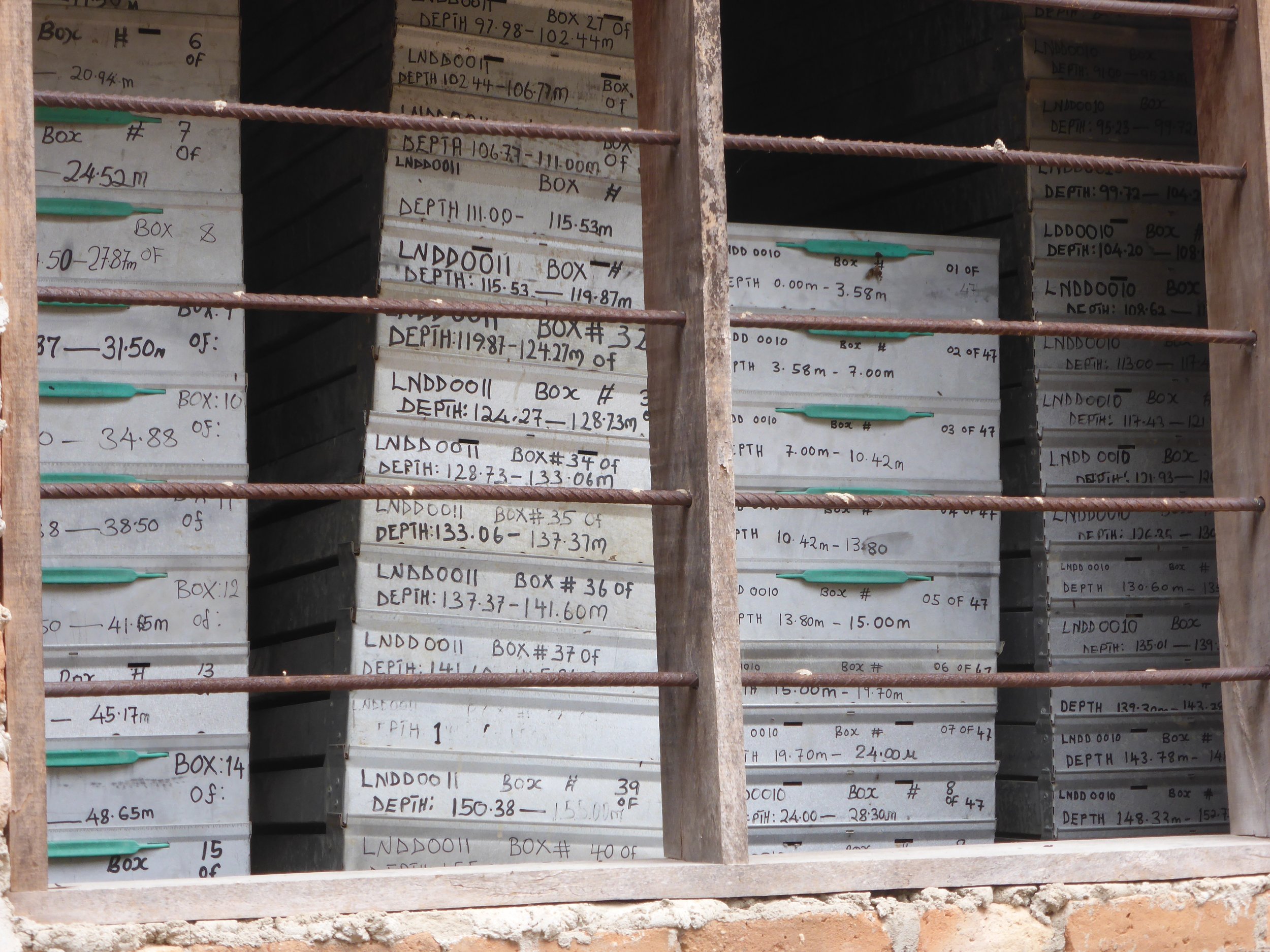
SOUTHERN TANZANIA
Anonymous
I don’t want to reveal my name because otherwise I would be threatened with repression, as it was the case in the past, but I continue to oppose uranium mining because it destroys our environment and is harmful for all living beings.
My activities and those of my fellow campaigners are directed against uranium exploration and mining projects in southern Tanzania. Particularly noteworthy is the fact that some of the projects are located within and on the periphery of a protected area, the Selous Game Reserve. Today, only one project remains, and it may start mining soon, but others could also be revived if uranium demand increases[14].
But at the beginning of these plans, all this was unknown to us. For example: When the plans to mine uranium here became public people were only informed about the benefits they will get from uranium mining and that the mineral has no effect on humans. During some of the explorations, local workers have not even been provided with protective gear. Our campaigns are directed against such misinformation and its consequences. We have made and continue to make every effort to inform our communities about the consequences of mining projects in all transparency. We would like to see a future that is not oriented toward the temptations of short-term revenues from uranium mining and that ignores its dire consequences.
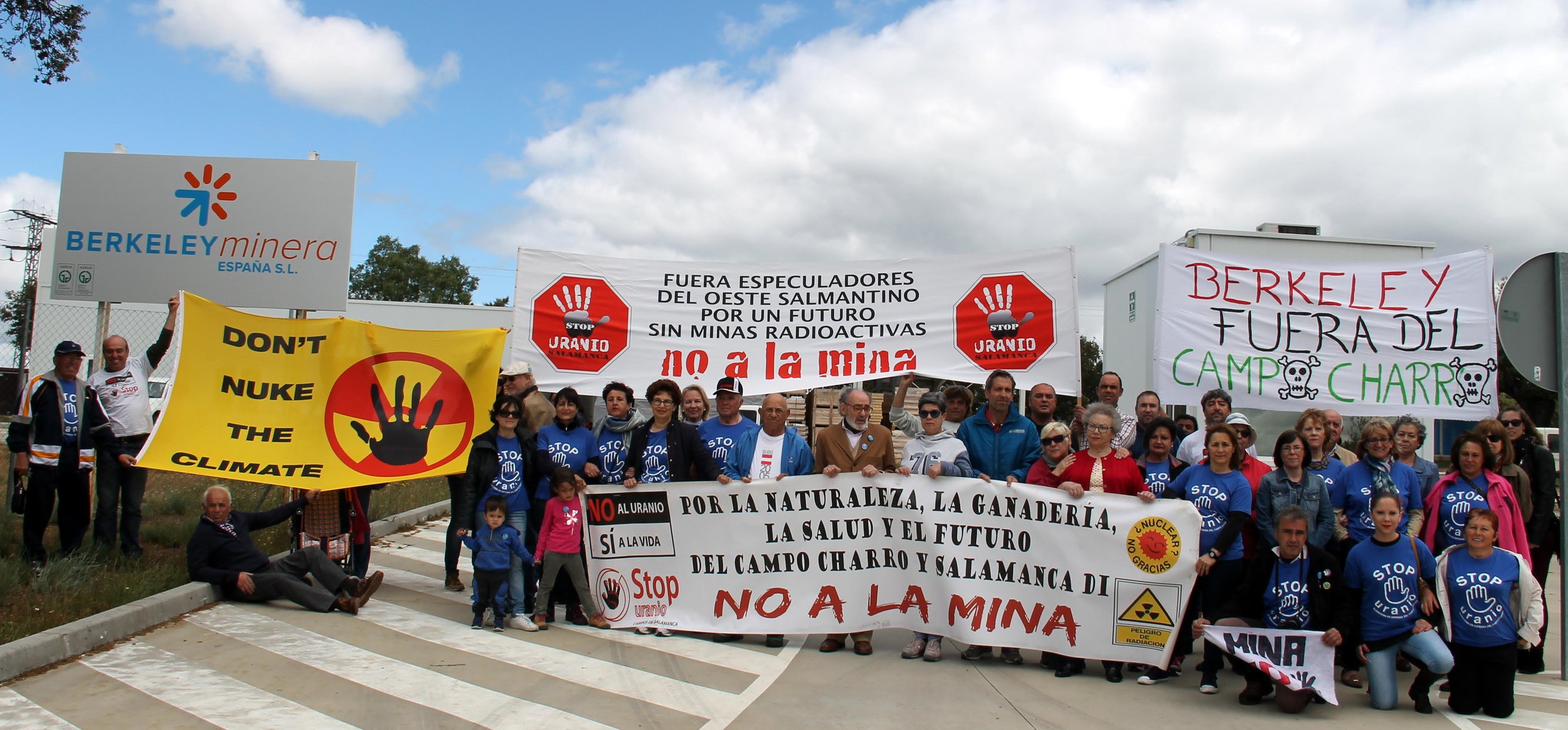
SPAIN
My name is José Ramón Barrueco and I am the spokesman for the Stop Uranium Platform, an organization that has been fighting against an Australian multinational, Berkeley Energia Limited, which intends to open uranium mines in the province of Salamanca, as well as a uranium processing plant in the town of Retortillo.
We oppose uranium mining for health reasons for the inhabitants of the area, for environmental reasons as the mining facilities are located next to areas protected by the Natura 2000 Network and for economic reasons as it destroys more jobs than it can create. Nuclear energy is tremendously unsupportive of future generations, as it leaves radioactive waste that will take thousands of years to lose its harmful effects, so it should not be exploited by the current generation.

CANADA
My name is Angela Bischoff and I work with the Ontario Clean Air Alliance. Industry efforts to “greenwash” nuclear energy make a mockery of clean energy goals.
All stages of the nuclear fuel chain, from uranium mining, processing, refining, fuel fabrication, reactor operations and nuclear waste handling, all emit radioactive, carcinogenic pollutants, and leave a toxic legacy of radioactive wastes.
Nuclear is not a climate solution – it’s too slow to make a difference during this climate decade and diverts valuable investment from renewable energy technologies.
In Ontario, for example, the Doug Ford government cancelled 758 renewable energy projects and slashed the budget of our conservation programs by 60%. It then quietly bought up 3 gas plants, committing to ramp up gas power pollution by 500% or more by 2040, and proceeded with plans to rebuild 10 of our aging nuclear reactors and build a new SMR (small modular nuclear reactor) in the GTA (Greater Toronto Area).
Meanwhile, conservation and renewables are now less than half the cost of a new nuclear reactor and even lower cost than running our existing reactors – with no radioactive waste legacy to leave for untold future generations.
The good news is we don’t have to settle for nuclear and fossil fuels, both which are on the decline globally. In Ontario we can replace our gas power by 2030 and all nuclear extensions and rebuilds with a combination of made-in-Ontario wind and solar, conservation, and Quebec water power and storage imports. QC has massive surplus water power and storage that could turn Ontario’s intermittent wind and solar energy into a firm 24/7 source of baseload electricity supply for Ontario – at a fraction of the cost and time of nuclear.
The world is moving to wind/water/solar. Wasting more dollars and time on nuclear would be a travesty. Nuclear is a dirty, dangerous, expensive false solution.
THE CLIMATE CRISIS NEEDS URGENT ACTION – NUCLEAR IS A BRAKE PAD
Anyone who claims to be able to protect the climate with nuclear power fails to grasp the disastrous consequences of uranium mining, the nuclear fuel chain, and the various and overlapping environmental crises the planet currently faces. It is well evidenced that climate change does not affect everyone equally, its consequences unequally distributed globally. The nuclear lobby’s motto “Nuclear for Climate” is yet another example of how this dinosaur of an industry is trying to shirk responsibility at the expense of those who are already affected by climate change and who contribute very little to its underlying conditions. After all, the major uranium mining areas are rarely located where their products are to be converted into electricity. Of course, the industry’s narrative catches on with those who believe in a “business as usual” utopia. But, we cannot mine our way out of the climate crisis[15] and while it may not be perceived as such, nuclear power would be one attempt to do just that. “Nuclear for Climate” is merely a continuation of the same logics that have landed us in the climate crisis to begin with. It is oriented around the idea that we can dredge our way out of the crisis at the expense of others, who are too often hidden from view. Simply put, “Nuclear for Climate” is another inequitable and unjust approach to global environmental breakdown. Those pushing for nuclear “solutions” to the climate crisis must realize that environmental breakdown requires a post-growth strategy that moves beyond extraction – nothing less. Greening the surface of nuclear power won’t do the job.
—-
[1] https://www.oxfam.org/en/5-natural-disasters-beg-climate-action
[2] For more ‘Facts and Data about the Raw Material of the Atomic Age’ consult the ‘Uranium Atlas’: https://www.nuclear-free.com/uranium-atlas.html
[3] For a summary of the counter-arguments (too dirty, too dangerous, too expensive, too slow) see: https://dont-nuke-the-climate.org/
[4] https://www.ft.com/content/46c63e13-142b-4e18-b141-b621023e8073
[5] Nuclear power wants to enter the ‘Green Zone’, but is not admitted: https://theferret.scot/were-barred-from-cop26-nuclear-industry-complains/
[6] https://medium.com/generation-atomic/these-young-pro-nuclear-campaigners-promise-to-take-cop26-by-storm-133d8502c4ca
[7] For “[a] critical analysis of the EU Joint Research Centre technical assessment of nuclear energy” see: https://eu.boell.org/en/2021/09/01/nuclear-energy-eu-taxonomy and https://www.worldnuclearreport.org/IMG/pdf/wnisr2021-lr.pdf from page 38.
[8] https://ec.europa.eu/info/sites/default/files/business_economy_euro/banking_and_finance/documents/210329-jrc-report-nuclear-energy-assessment_en.pdf
[9] See for example: https://dont-nuke-the-climate.org/blog/dirty-dangerous-destruction
[10] For more on this see: https://www.nirs.org/category/greenworld/
[11] The Northern Miner (2007): Editorial: New uranium, moly projects flood PDAC. In: The Northern Miner 2007, 19.03.2007. Online verfügbar unter https://www.northernminer.com/news/editorial-new-uranium-moly-projects-flood-pdac/1000210861/
[12] See: https://smrroadmap.ca/
[13] For an overview of the state of the global nuclear industry consult the World Nuclear Industry Status Reports: https://www.worldnuclearreport.org/-The-Annual-Reports-.html
[14] For more information on the situation in the Tanzanian south see: https://uranium-network.org/current-projects/mkuju-river-uranium-project/
[15] https://theecologist.org/2021/may/25/we-cant-mine-our-way-out-climate-crisis /// https://cop26coalition.org/peoples-summit/extractivist-growth-and-alternatives-from-below-why-we-cant-mine-our-way-out-of-the-climate-crisis/
Indigenous peoples to get $1.7bn in recognition of role in protecting forests
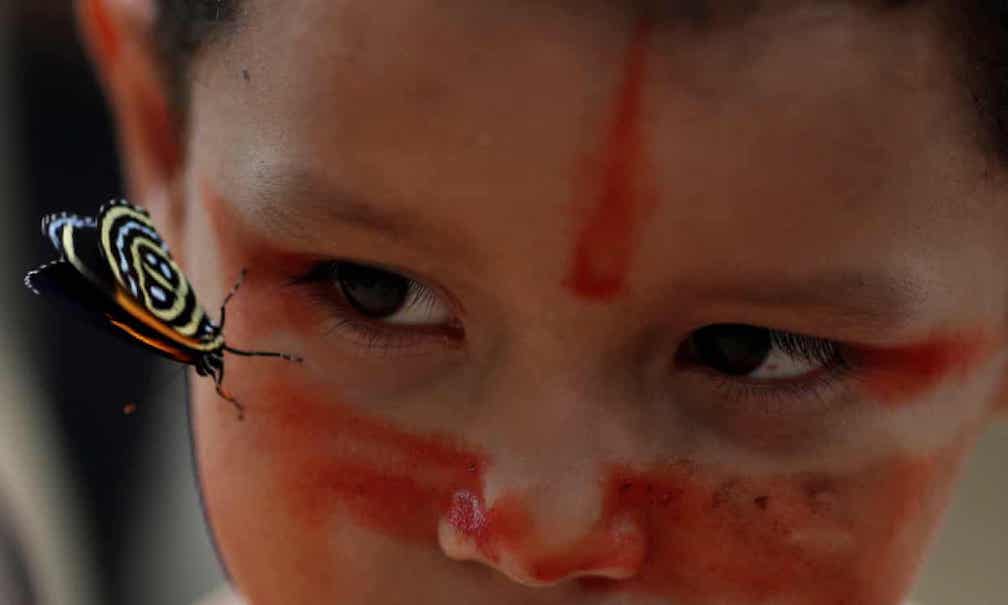
Cop26 pledge cautiously welcomed as ‘first step’ in making indigenous rights central to climate crisis talks
At least $1.7bn of funding will be given directly to indigenous peoples and local communities (IPLCs) in recognition of their key role in protecting the planet’s lands and forests, it will be announced at Cop26 today.
The governments of the UK, US, Germany, Norway and the Netherlands are leading the $1.7bn (£1.25bn) funding pledge, which is being announced as part of ambitious global efforts to reverse forest loss and land degradation by 2030, with campaigners cautiously hopeful that this conference of the parties (Cop) could be the first to properly champion indigenous peoples’ rights.
Tuntiak Katan, a leader of Ecuador’s indigenous Shuar people who serves as general coordinator of the Global Alliance of Territorial Communities, said: “We are happy with the financing announcement, but we will be watching for concrete measures that will reveal whether the intent is to transform a system that has directed less than 1% of climate funding to indigenous and local communities. What matters is what happens next.
“This Cop is interesting and unprecedented,” he added. “After attending these climate events for years, this one is different. The UK has put tremendous effort into raising our visibility at this Cop.
“But the UK is now at a crossroads: they can either use our presence as a photo op, or they can choose to become a global champion for indigenous peoples and local communities.”
As indigenous peoples have fought for their rights more publicly in recent years, they have faced increasing persecution. In 2020, a record number of people were killed for protecting their land, with more than a third from indigenous communities.
Despite the important role they play in protecting forests, only a small fraction of these communities have secure rights to their land. The funding is recognition that IPLCs are crucial to protecting tropical forests and preserving ecosystems. Leaders will be calling on other countries to respect and protect these rights in accordance with national legislation.
While the majority of the money in the fund will come from governments, charitable foundations including the Ford Foundation, Bezos Earth Fund, Bloomberg Philanthropies, Arcadia, Wyss Foundation and the Rainforest Trust are contributing more than $600m.
Darren Walker, president of the Ford Foundation, said the aim was to give IPLCs more of a voice in policymaking and discourse. It is hoped more funding will follow.
Walker said: “It’s a first step, it’s a down payment. We ignore these communities at our peril. We have to invest more, we have to support them more.
“I’m not asserting that this is the only solution,” he added, “but it’s a critical part of the puzzle of solving climate change and this part of the puzzle needs to be resourced properly.”
The money will support IPLCs’ capacity to govern themselves collectively, assist with mapping and registration work, back national land reform and help resolve conflict over territories. It will continue until 2025.
Walker said: “We have been wedded to technical, market-based solutions, and have ignored the communities right in front of us who are key to solving the challenge.
“This is an historic moment. We have a once-in-a-generation opportunity to change the paradigm and to at last give power and a seat at the table to the people who are critical to the solution. A new paradigm is emerging and we will hear it loud and clear in Glasgow.”
The announcement follows a number of studies that show securing indigenous rights and land tenure is an effective way of protecting the environment. A 2021 UN review of more than 300 studies found that deforestation rates in South America were up to 50% lower within areas under indigenous control than elsewhere.
It follows an emphasis on including indigenous voices at the International Union for Conservation of Nature conference in Marseille in September. For the first time in its seven-decade history, the IUCN included indigenous peoples as full voting members in their own right, rather than under the NGO category.
Paul Redman, founder of If Not Us Then Who?, a US charity that highlights the role indigenous and local peoples play in environmentalism, said: “I think it’s the first time in all the climate conferences I’ve been to since 2013 that leaders really seem to be genuinely engaged and wanting indigenous peoples to be at the table.
“The real key is follow-up: money going to indigenous communities and land titles being allocated to indigenous peoples post-Cop.”
Indigenous leaders to push for land tenure rights as climate solution at COP26
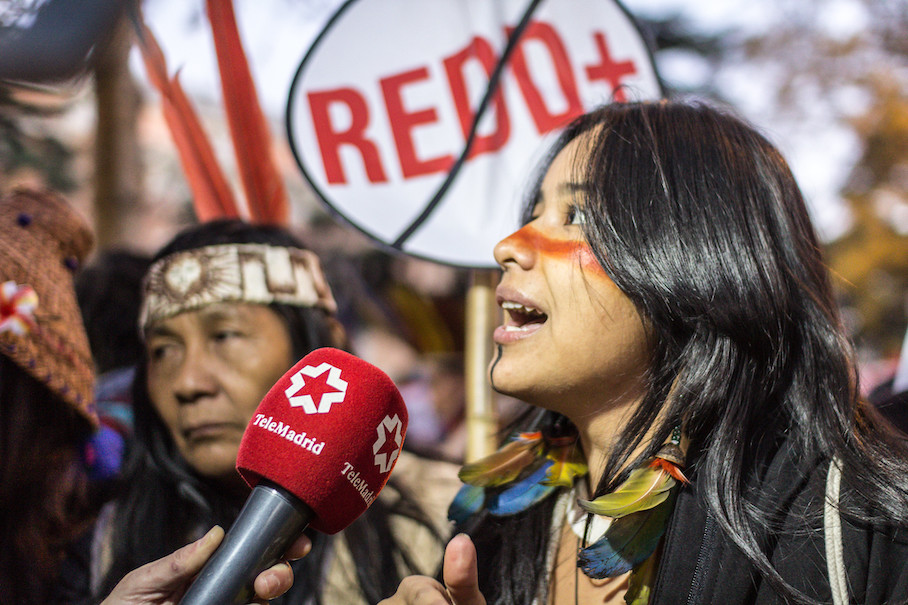
- Indigenous leaders from around the world will join government officials, scientists, activists, and NGO representatives at the U.N. climate summit in Scotland to highlight the role of Indigenous peoples in providing climate mitigation and adaptation solutions.
- New reports released ahead of the conference by the World Resources Institute and PRISMA Foundation emphasize the integral role of Indigenous land rights and access to climate funding in combating the climate crisis.
- Indigenous communities on the ground receive only a small fraction of climate funding directed toward Indigenous land tenure and forest management, with international NGOs, development agencies and consulting firms receiving the lion’s share, the PRISMA report says.
Indigenous leaders from around the world are heading to the COP26 United Nations climate summit this weekend, where one of the main topics on their agenda will be highlighting community land tenure as an often-overlooked way to mitigate climate change.
Research demonstrating that granting Indigenous peoples and forest communities formal titles to their lands as a cost-effective approach to tacking climate change has been piling up for years. Two new reports released on Oct. 27 by the World Resources Institute and the PRISMA Foundation add to that growing body of work.
“No [climate] initiative can succeed if rights are not recognized,” said Mina Setra, deputy to the secretary-general of the Indigenous Peoples Alliance of the Archipelago (AMAN), an organization with more than 2,400 affiliated communities throughout Indonesia.

Setra and other Indigenous leaders will join government officials, scientists, activists, and NGO representatives at the 13-day summit in Glasgow, Scotland, that kicks off on Oct. 31.
While government officials will be the ones at the negotiating table, COP26 will feature a slew of parallel events, street protests, campaigns and proposals. The flurry of activity has already begun, with global events leading up to the summit.
Land rights to help mitigate climate change
In its newly released report, WRI, a nonprofit research organization based in Washington, D.C., presents insights from recent research illustrating how securing land and forest rights of Indigenous peoples and other local communities (IPLCs) prevents deforestation and destruction contributing to climate change.
“The science is now so far advanced, it’s pretty irrefutable,” Peter Veit, director of WRI’s Land and Resource Rights initiative and the lead author of the report, told Mongabay in an interview. “There’s no excuse for not securing IPLC lands in your country. The challenge now is that we need to act on the evidence that exists.”
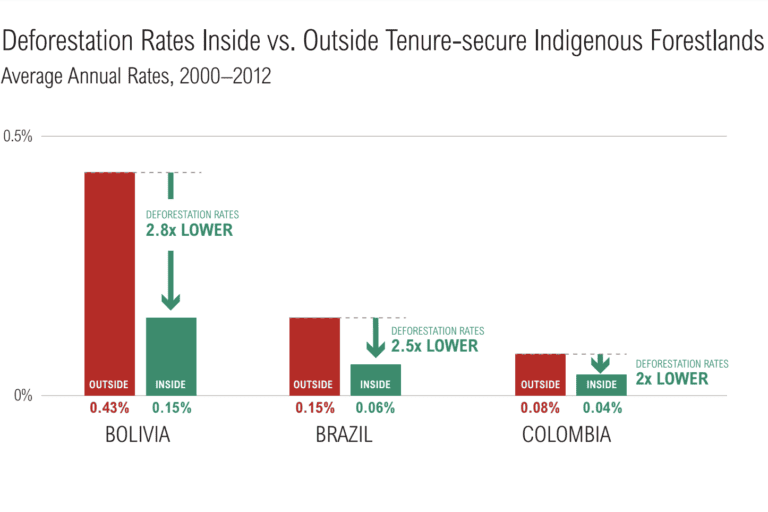
The report highlights that Indigenous lands alone hold more than a third of the planet’s large swaths of natural forests and an estimated 80% of the world’s biodiversity. Deforestation rates in Indigenous territories in the Amazon are two to three times lower than in similar non-Indigenous lands across several South American countries.
But although at least half the world’s land falls within IPLC territories and holds most of the world’s biodiversity, only 10% of IPLC land is recognized as such by national governments. Recent studies have shown that titling Indigenous and Afro-descendant lands in some regions of South America reduced deforestation by 30-75%. Securing land tenure is a cost-effective climate mitigation strategy, according to the report.
“Our hope is that the climate community recognizes the role of IPLCs and the critical role that tenure security plays,” Veit said.
Last September in Marseille, Indigenous rights organizations and activists who took part in the “Our Land, Our Nature” congress developed a manifesto calling for a total halt to new protected areas that displace IPLCs. Titled the “Marseille Manifesto: a people’s manifesto for the future of conservation”, 50 signatories seek to assert the role of Indigenous land tenure in environmental protection and criticize the Convention on Biological Diversity’s (CBD) Post-2020 Global Biodiversity Framework target safeguarding 30% of land and ocean through exclusionary protected areas.
“[The manifesto] appears at a critical juncture, when the only solutions put forward to the climate and biodiversity crises are business as usual, in particular more protected areas and the commodification of nature,” said Fiore Longo, head of Survival International’s conservation campaign.

Sara Omi, an Indigenous women’s alliance leader from an Emberá community in eastern Panama, will be pushing for Indigenous land and forest rights, as well as local community support, once again in Glasgow, her fifth U.N. climate summit. She told Mongabay she has seen gradual progress in Indigenous participation and recognition at the international conferences.
“I think that at each conference things have moved forward little by little,” Omi said. “Advocacy is more and more visible every summit, but it has not been an easy task.”
Emberá-Wounaan territory, the land of the Emberá and Wounaan peoples, is legally recognized in Panama. However, the government has yet to fulfill obligations to address invasions of Indigenous lands that undermine the legal rights the community has received. Deforestation is much more than a matter of carbon emissions to local communities.
“When we lose forest, we also lose traditional knowledge and medicine,” Omi said, adding she also wants to see more climate financing actually reach communities on the ground. “The resources do not make it to the territory.”
Getting climate funding to communities on the ground
Addressing the critical point of funding is the focus of another new report, this one from the PRISMA Foundation, a nonprofit regional environmental and development research organization based in El Salvador.
Indigenous and local community territories hold roughly a quarter of global carbon but receive only a tiny fraction of global climate financing, the PRISMA report says; the WRI report also highlights this issue. The $2.7 billion disbursed between 2011-2020 to IPLC land tenure and forest management represents less than 1% of official designated assistance for climate change, and less than 5% of official designated assistance for general environmental protection. Only a small share of this assistance likely went to IPLC communities on the ground.

The PRISMA report calls for a “reimagining” of the global climate finance framework, arguing that programs and financing mechanisms have been largely top-down when they need to be bottom-up.
“The lion’s share of the money has been captured at higher levels, amongst international NGOs, consulting firms, technical experts, and government agencies: only 10% of total climate finance is committed to local levels,” noted the report authors.
The report lays out three case studies from Central America, reviewing success stories of an Indigenous Cabécar community women’s movement in Costa Rica, Indigenous Guna territorial governance in Panama, and community forest concessions in Guatemala. Only the latter has received significant international support and funds.
“Communities are already organizing,” Andrew Davis, one of the PRISMA Foundation researchers who co-authored the report, said in an interview with Mongabay. “Financing [needs] to be reaching the ground in a way that is aligned with local people’s priorities.”
The way donors manage risk and the lack of accountability in the system creates bottlenecks, he said, preventing resources from reaching communities that are both vulnerable to the impacts of climate change and in a critical position to help mitigate the phenomenon.
“There really needs to be a kind of fundamental change in the climate finance architecture,” Davis said.
When funding does make it through, donors often continuously cherry-pick the same projects instead of directing finance to Indigenous-managed regional initiatives that provide direct support to local community organizations setting new efforts up and running.
“The most important thing for international donors to do is to get to know the territories,” Davis said.
The focus of the PRISMA Foundation’s research is Mexico and Central America, and the WRI report mostly covers South America. There is more research on the links between land tenure and deforestation rates from Latin America than other parts of the world because work mapping the boundaries of recognized and customary Indigenous and community lands is more advanced in the region. However, work is still underway to map the boundaries of recognized and customary Indigenous and community lands in other parts of the world.
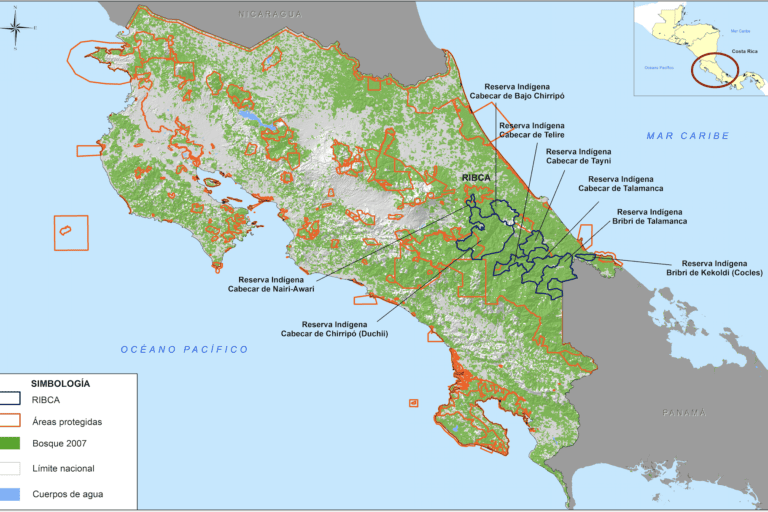
Back in Indonesia, Mina Setra has seen the research out of South America and said she expects future research in Indonesia to help yield similar results. Indigenous communities in different regions also have local traditions that mandate sustainable agriculture and the seasonal closures of forests, fisheries and other natural resources to allow for regeneration, she said.
“We can develop actions based on our culture and our traditional knowledge,” Setra said, adding that with formal recognition of land and forest tenure, “we can do even more because communities will be able to scale up their actions.”
Setra is alarmed that the COP26 may view the carbon market as an inevitable solution. She said everyone starts off on the same page when talking about the climate emergency in discussions, but by the end it’s all about carbon prices.
“We see that everything is leading up to the carbon market. That really worries us,” she told Mongabay.
Indigenous peoples and organizations have diverse perspectives on carbon offset schemes, often under the umbrella of the U.N.’s reducing emissions from deforestation and forest degradation program, or REDD+. These schemes are centered around efforts to confer financial value on the carbon stored in forests. Some Indigenous groups are active participants, while others have mixed opinions of what they see as trying to offset harmful practices that contribute to climate change in the first place. Setra’s organization, AMAN, holds a position that ties securing Indigenous rights to approval of REDD+ programs: “No rights, no REDD+.” Setra said she expects the organization will maintain that stance when it comes to the carbon market through a need to cater to business interests.
Indigenous leaders have been trying to bring their contributions and rights to climate talks since the first World Climate Conference in Geneva in 1979, and the first U.N. climate summit, or COP1, in Berlin in 1995. What began as a handful of Indigenous representatives protesting at conference doors to participate in negotiations has gained increased visibility and recognition over the years. The last five COPs saw the adoption of the Local Communities and Indigenous Peoples Platform (LCIPP) and a work plan to showcase to state parties and decision-makers the roles and contributions of Indigenous peoples, with a few shifting countries championing their proposals.
However, Indigenous advocacy at the global climate conferences still sometimes entails standing outside closed-door meetings, side events and restaurants to wait for official delegates to come out and get Indigenous proposals in their hands.
“Because we keep banging on the door, they have to listen,” Setra said. “That is our work: banging on the door.”
Banks and investors pouring billions into Arctic oil & gas bonanza despite climate pledges – report
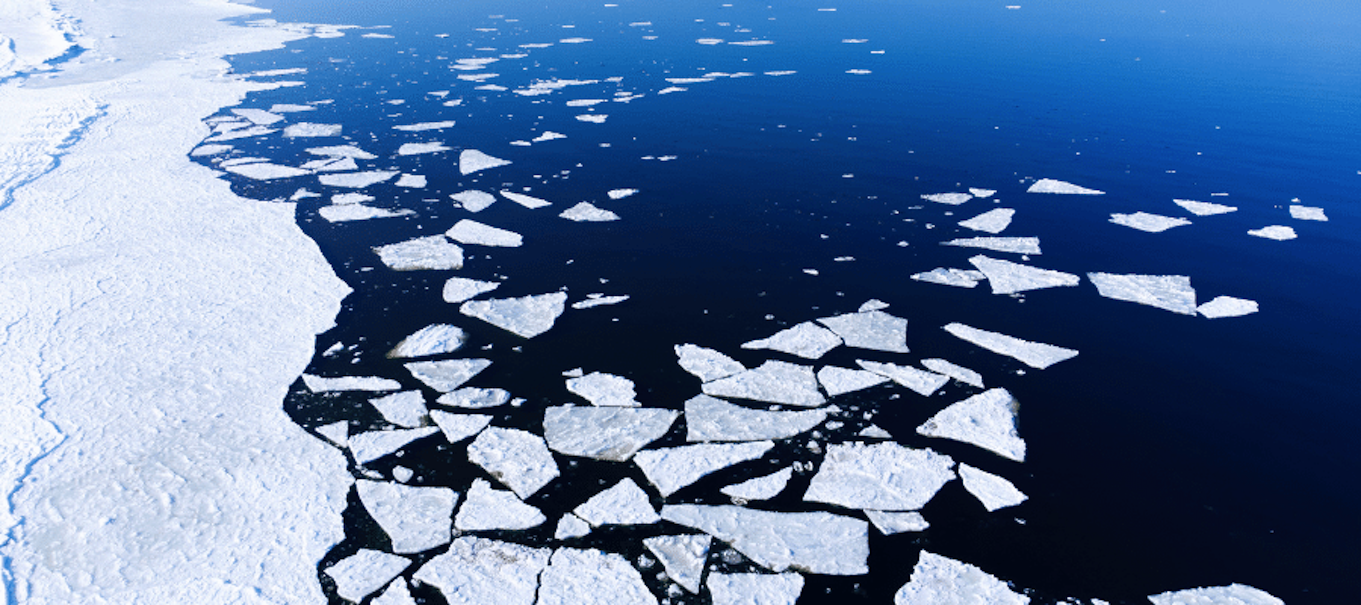
Paris, Thursday 23rd September 2021 – Oil and gas companies are set to ramp up production in the Arctic by 20% in the next five years (1), according to a new report from NGO Reclaim Finance (2). These Arctic ‘expansionists’ (3) – such as Gazprom, Total and ConocoPhillips (4) – have, it is revealed, been backed by hundreds of billions of dollars of support from banks and investors, despite many holding commitments to restrict fossil financing in the region.
The report details $314bn of loans and underwriting from commercial banks to Arctic oil and gas expansionists between 2016 and 2020. JPMorgan Chase was the biggest culprit ($18.6bn), with Barclays ($13.2bn), Citigroup ($12.2 bn) and BNP Paribas ($11.8bn) also featuring prominently. Investors are also facilitating the deadly oil and gas boom, holding around $272bn in Arctic fossil developers as of March 2021, with BlackRock ($28.5bn), Vanguard ($21.6bn) and Amundi ($12.9bn) leading the pack, all without Arctic exclusion policies.
The findings come just weeks after the International Panel on Climate Change warned of accelerating climate breakdown in the Arctic, with temperatures rising twice as quickly as elsewhere, while NASA is setto release its annual survey of Arctic sea ice loss in the coming days. Worryingly, the Arctic oil and gas ‘bonanza’ threatens to consume 22% of the world’s remaining 1.5°C carbon budget, while devastating local communities and biodiversity.
Commenting on the findings, campaigner at Reclaim Finance andreport author Alix Mazounie said: “The Arctic is a climate bomb, and our research shows that the oil and gas industry is hellbent on setting it off, thus blowing up our chances of avoiding runaway climate breakdown. But they are not the only culprits: financial institutions have bankrolled these companies, making a mockery of their own climate commitments. Since the oil & gas tigers won’t change their stripes,the likes of BNP Paribas, BlackRock and JPMorganChase must heed the instruction of the International Energy Agency and cut off the taps.”
Despite numerous commitments from financial institutions not to support oil and gas extraction in the Arctic, the report lays bare their fundamental design flaws. Thus while 20 of the top 30 banks fueling expansion in the Arctic region have so-called Arctic restriction policies, not a single one excludes support to companies developing new oil and gas projects in the region. Notably, HSBC and BNP Paribas were the top financiers of Arctic expansionists in 2020, despite adopting Arctic exclusion policies early on compared to their peers.
The report’s authors ascribe the fault to highly porous policies. Financial institutions such as AXA and Morgan Stanley have adopted highly limited definitions of the Arctic which permit ongoing expansion, while Goldman Sachs and Crédit Agricole are among several financial players restricting financing only to oil projects, there by permitting fossil gas, against the clear mandate of the IEA’s 1.5°C scenario. Crucially, policies often fail to effectively cover corporate financing, the major source of Arctic oil and gas financing.
The picture is even worse among investors, with only two out of the top 30 investors backing Arctic oil and gas expansion even possessing a policy, signifying a ‘blindspot’ in the sector. Meanwhile, amongst insurers, essential players for Arctic oil and gas extraction, only 13 out of the world’s top 46 companies have an Arctic sector underwriting policy – with even these policies failing to stop oil and gas expansion in the region.
Mazounie concluded: “As net-zero alliances proliferate, this report shines a harsh light on the realities of climate commitments in this precious region. The truth is thatfor most financial players, Arctic exclusion policies are mere fig leaves,failing to end support for oilandgas expansion. In this decisive hour for climate action in the run-up to COP26, financial institutions need to adopt the AMAP Arctic definition and end all support for oil & gas expansion in the Arctic, be it through projects or corporate financing. Passing the buck will no longer cut it.”
Notes:
The report is entitled Drill, Baby, Drill: How banks, investors and insurers are driving oil and gas expansion in the Arctic. Reclaim Finance has also produced an interactive map allowing users to view the scope and flaws of financial actors’Arctic exclusion policies, including in relation to oil and gas projects.
- According to Reclaim Finance calculations based on Rystad Energy data: production is set to increase from 11.5 million barrels of oil equivalent (mmboe) per day in 2020 to 13.7 mmboe per day in 2026 in the Arctic (as per the AMAP area).
- Figures are taken from the report. Data on oil and gas assets and companies comes from the Rystad Energy database. Financial data was collected by Profundo: it includes all financial transactions between commercial banks and the Arctic expansionists listed in the report from 2016 to 2020, as well as investments as of the filing date March 2021. See report methodology for more details.
- The report focuses on the top 20 oil and gas companies with direct participation in assets under development or field evaluation (according to Rystad Energy data collected in August 2021) in the Arctic (as per the AMAP area). They are referred to as ‘expansionists’.
- By 2030, Gazprom is slated to increase production by 14%, ConocoPhillips by 36%, and TotalEnergies by 28%. These figures could be higher if all their assets are exploited.
Bolsonaro must be held criminally responsible for assault on the Amazon, say activists
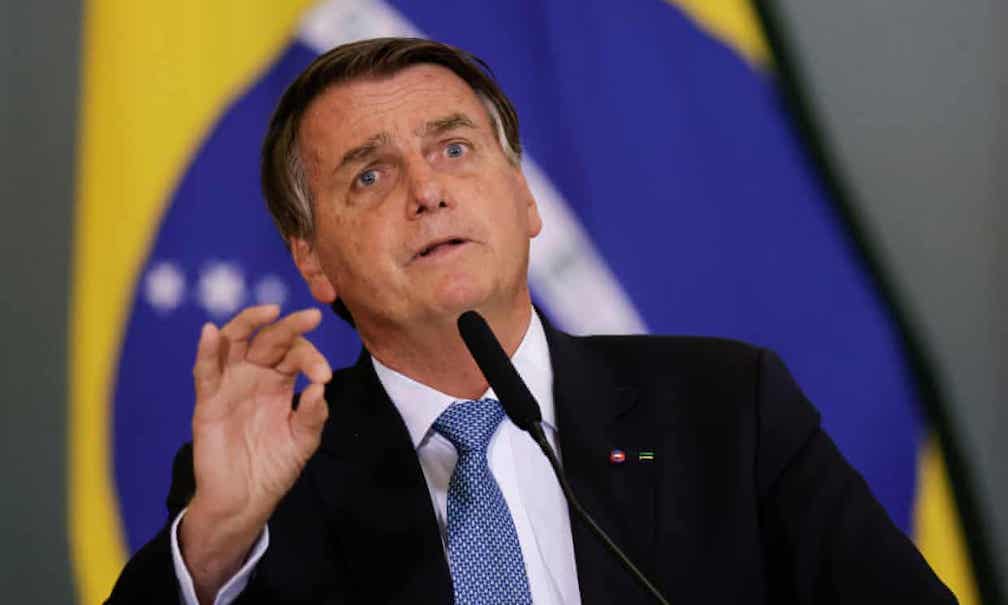
In a petition to the international criminal court experts said the ‘mass deforestation’ poses a clear danger
The Brazilian president Jair Bolsonaro must be held criminally responsible for a “ruthless” assault on the Amazon that has exacerbated the climate emergency and imperilled humanity’s very survival, activists have argued in a petition to the international criminal court.
In a submission to The Hague-based tribunal on Tuesday, legal and scientific experts said the “mass deforestation” unfolding under the rightwing nationalist posed a clear and present danger to Brazil, and to the world.
“There is a substantial body of evidence demonstrating the commission of ongoing crimes against humanity within Brazil which requires immediate investigation and prosecution,” the 284-page petition said, pointing to soaring Amazon devastation under Bolsonaro.
“However, the impact … extends far beyond the widespread, ongoing loss of life and deep suffering inflicted upon local communities. State-of-the-art climate science demonstrates that consequent fatalities, devastation and insecurity will occur on a far greater scale regionally and globally, long into the future, through the attributable links between the rapid acceleration in deforestation, its contribution to climate change, and the frequency and intensification of extreme weather events,” it went on.
“Given the multilateral breadth and depth of its impact, the nature of the attack … constitutes criminality of the very highest order,” the plaintiffs said, adding: “The ICC now has the opportunity – indeed the ICC has the duty – to act.”
Bolsonaro, a former paratrooper who has presided over what critics call a historic onslaught against the Amazon and its indigenous inhabitants, has been the subject of three previous ICC complaints since he took office in early 2019.
In August, campaigners asked the court to investigate Brazil’s president for the alleged genocide of its indigenous people, partly as a result of Bolsonaro’s anti-scientific response to the Covid pandemic. “He needs to pay for all the violence and destruction he is leading,” the indigenous leader Sônia Guajajara said at the time.
Johannes Wesemann, the founder of AllRise, the Vienna-based environmental litigation group behind the latest ICC complaint – the fourth against Brazil’s president – said it sought to add an international dimension to Bolsonaro’s alleged offences by exposing their impact on global heating.
Wesemann said: “The government under Bolsonaro directly and indirectly facilitates and thus accelerates the destruction of the Brazilian Amazon. This obviously in turn leads to deliberate and uncontrolled environmental destruction of the ecosystem with catastrophic consequences at a local level … but also with a serious consequence on a global scale.”
“Today, we know emissions attributed to the Bolsonaro administration will cause over 180,000 deaths globally until 2100,” Wesemann said, citing a submission from climatologists including Dr Friederike Otto, one of the lead authors of the recent IPCC report on the climate emergency.
“Our sole purpose … is to ensure that state, private sector and political actors such as Jair Bolsonaro, and past and present members of his government, who intentionally enable such destruction are held legally accountable,” Wesemann said, noting how mass deforestation had a “serious and scientifically proven impact on the global climate – and thus on our long-term survival.”
The Brazilian presidency did not respond to a request for comment on the accusations against Bolsonaro. In recent months Brazil’s government has launched a crackdown on environmental criminals in the Amazon, which critics suspect is designed to convince the international community it is cleaning up its environmental act ahead of the Cop26 climate summit.
Last week Bolsonaro’s recently appointed environment minister, Joaquim Leite, told reporters their country wanted to use the Glasgow meeting to show the world Brazil could be “part of the solution” to the climate crisis and was committed to cutting emissions.
But environmentalists are unconvinced by the pre-Cop rhetorical softening.
“What’s the solution?,” Suely Araújo, the former head of Brazil’s environmental agency Ibama, asked in a recent interview. “Change the president.”